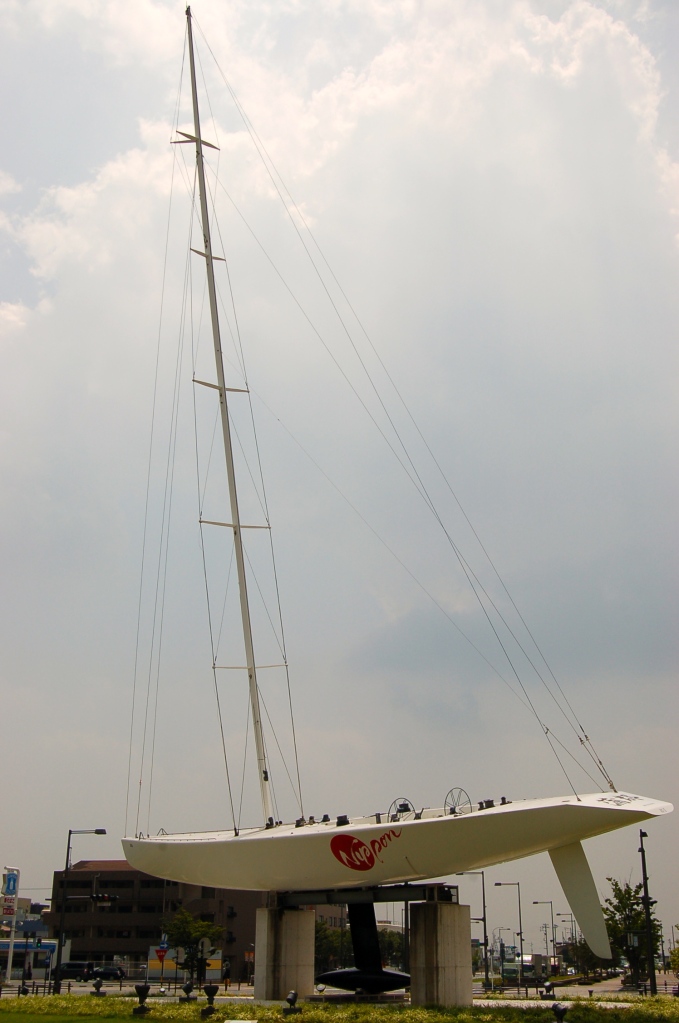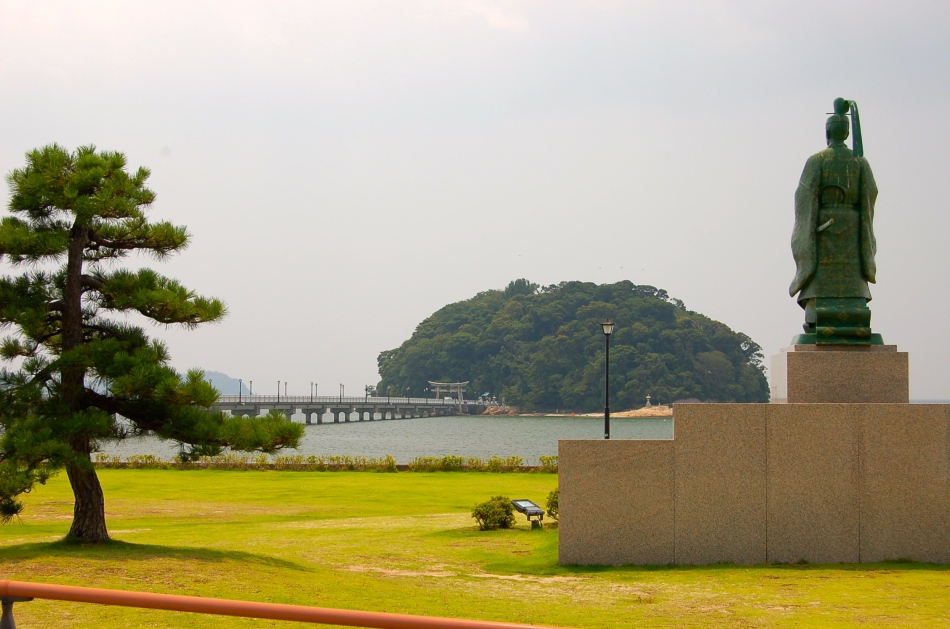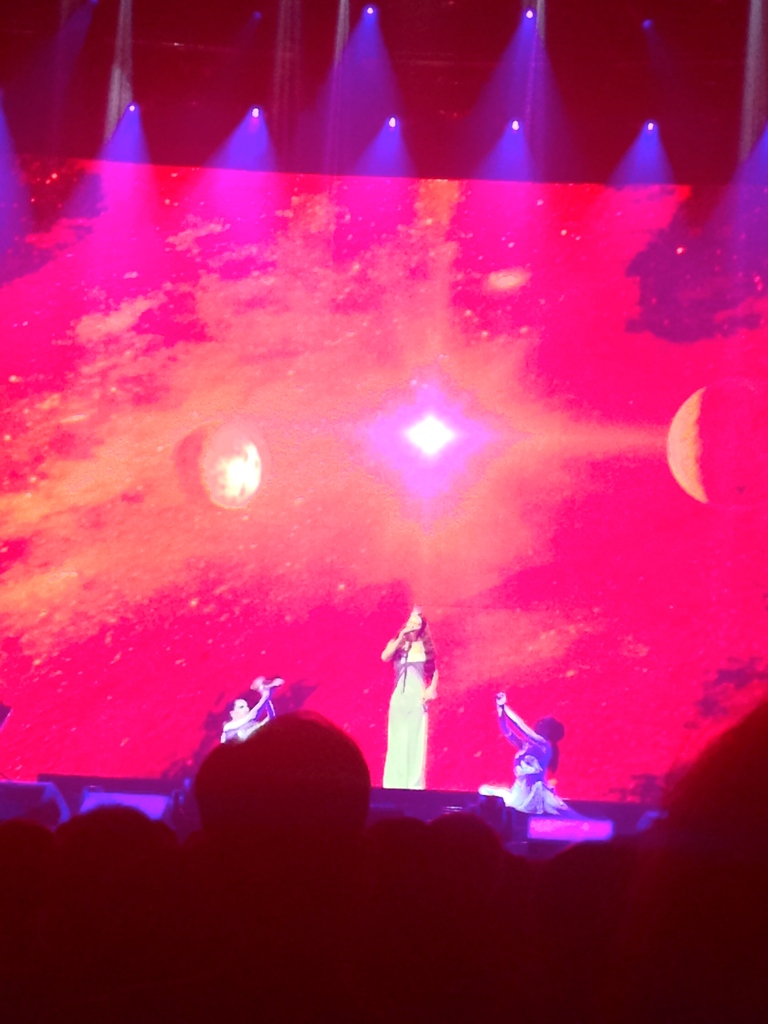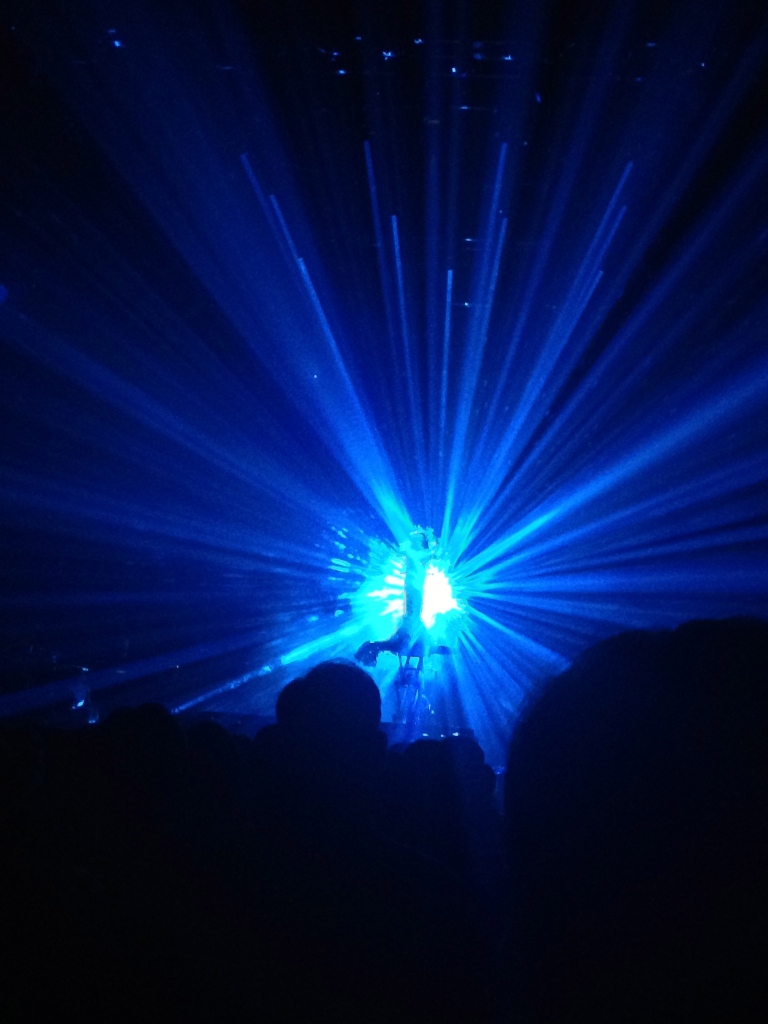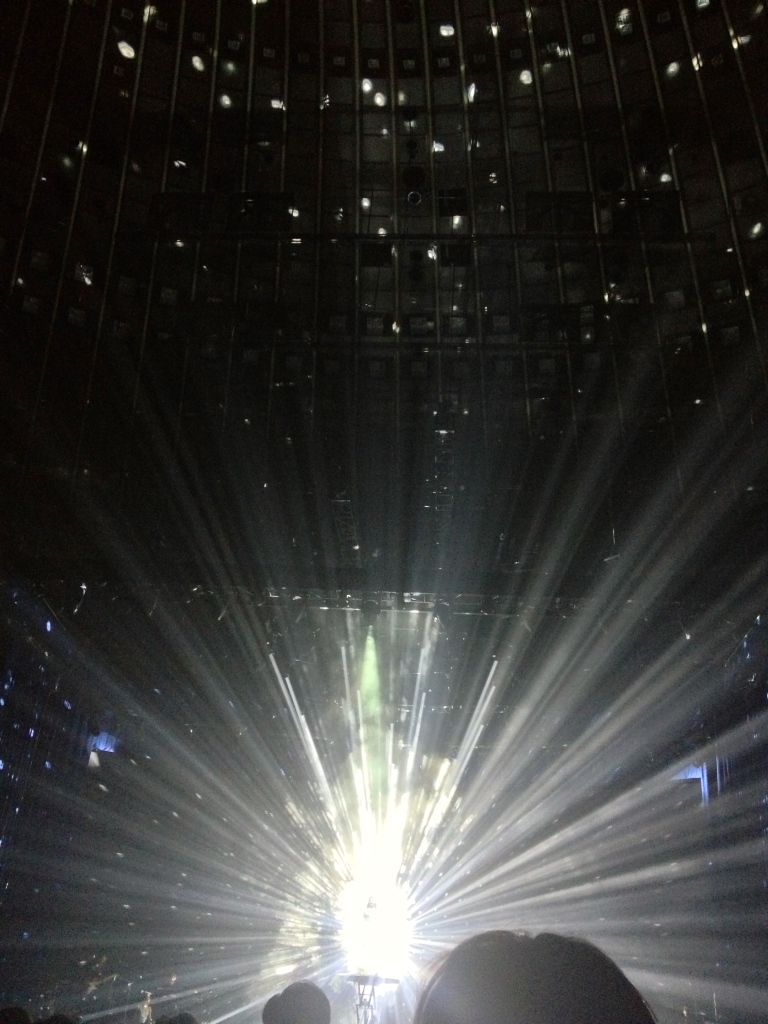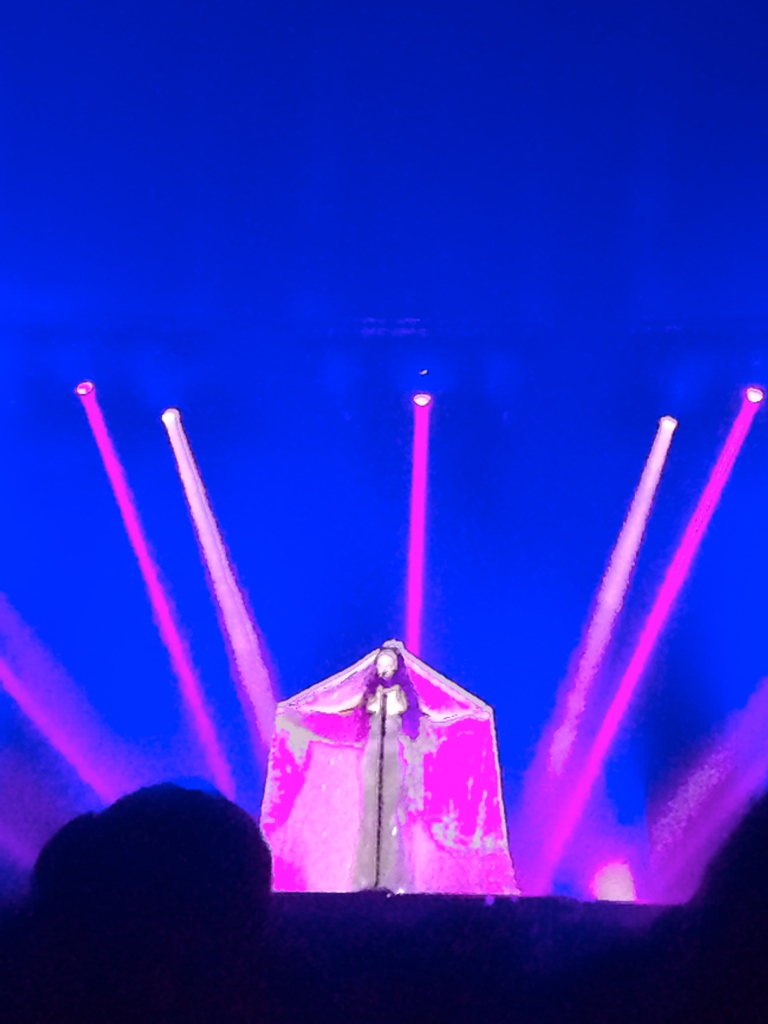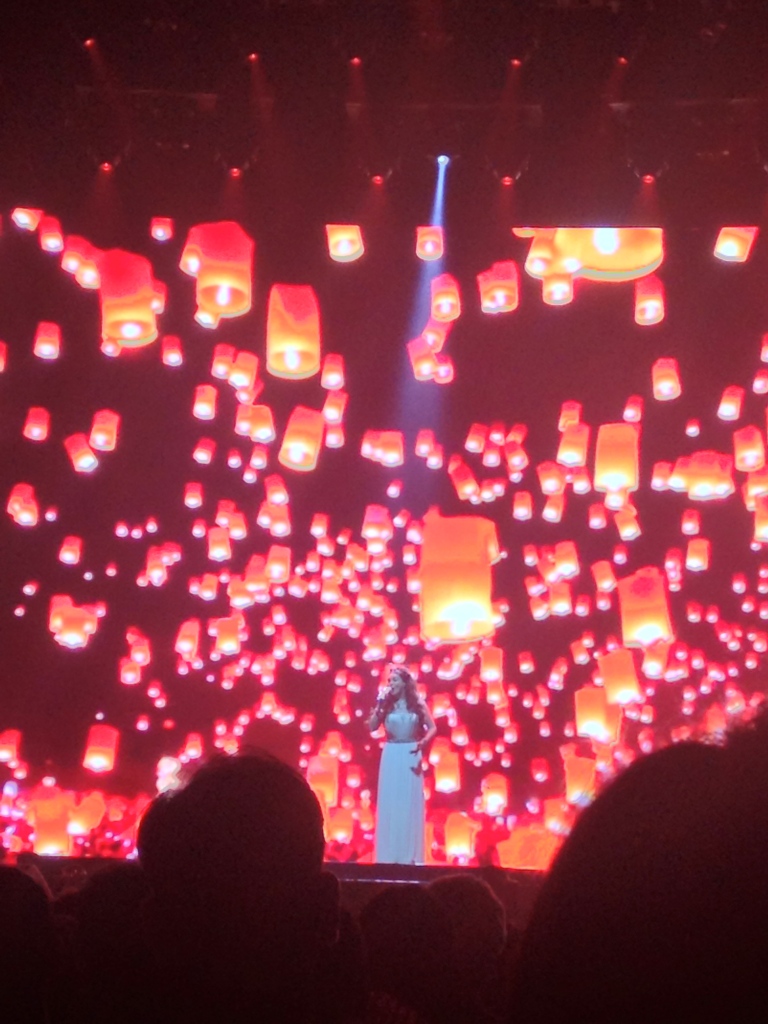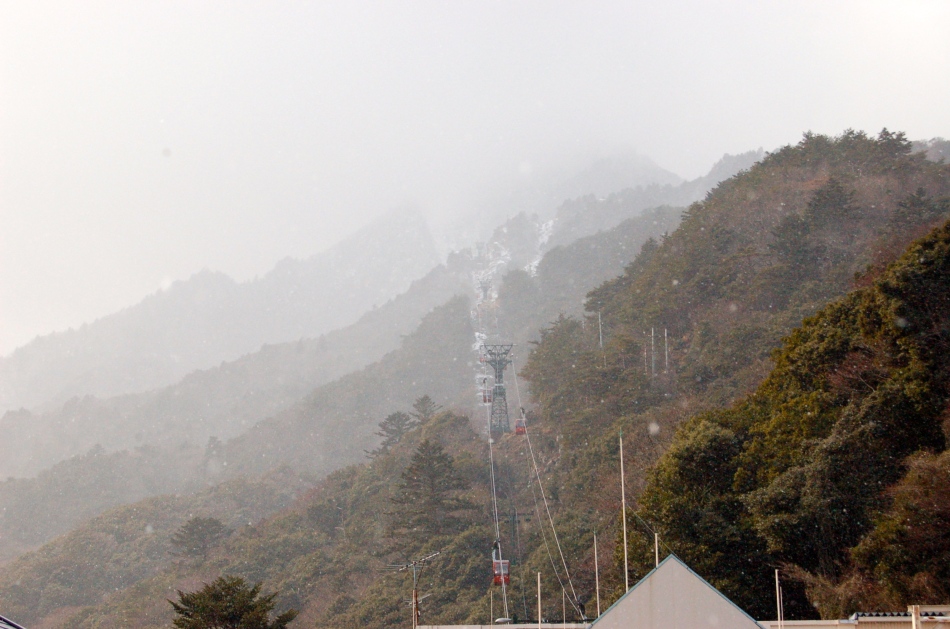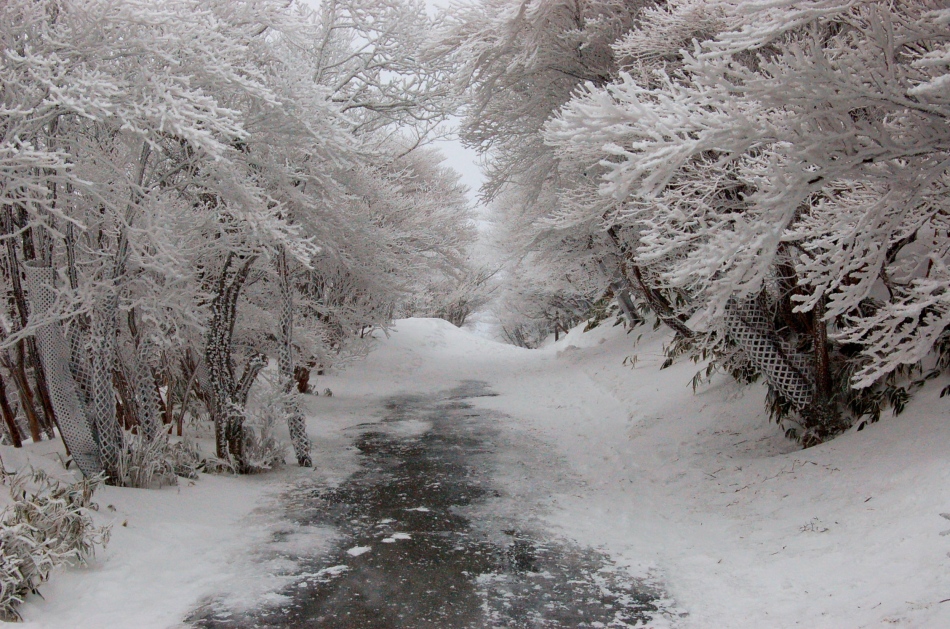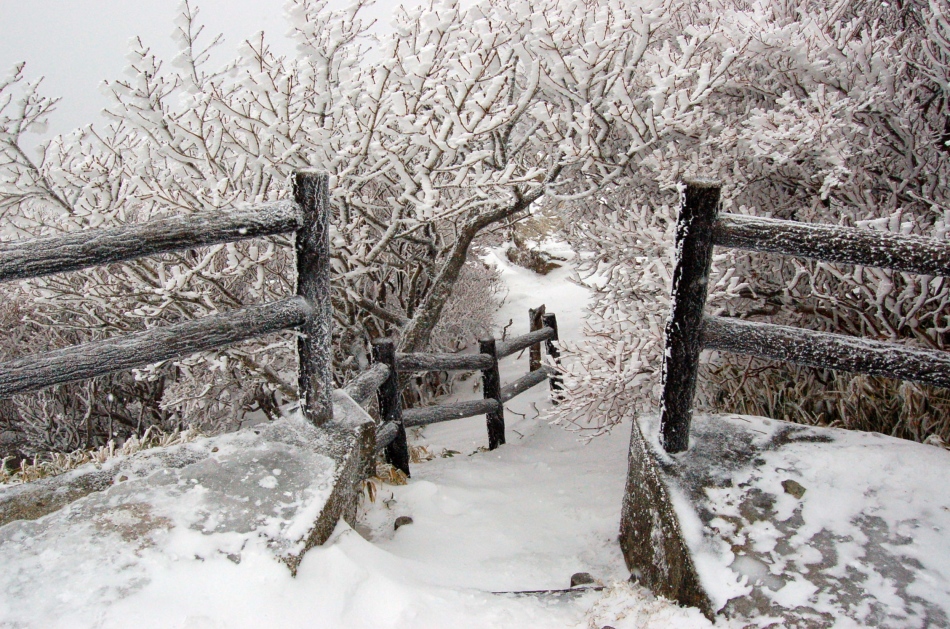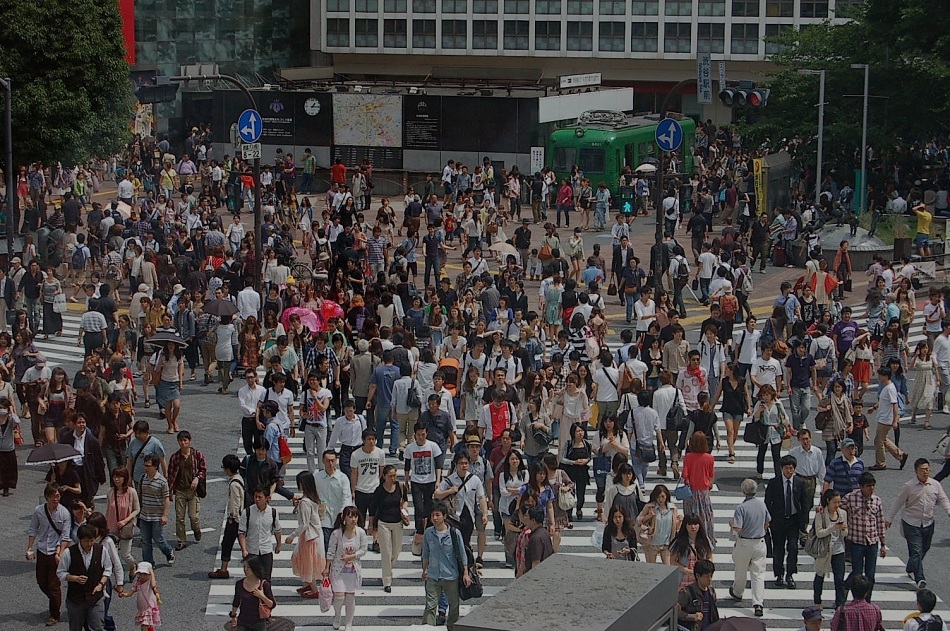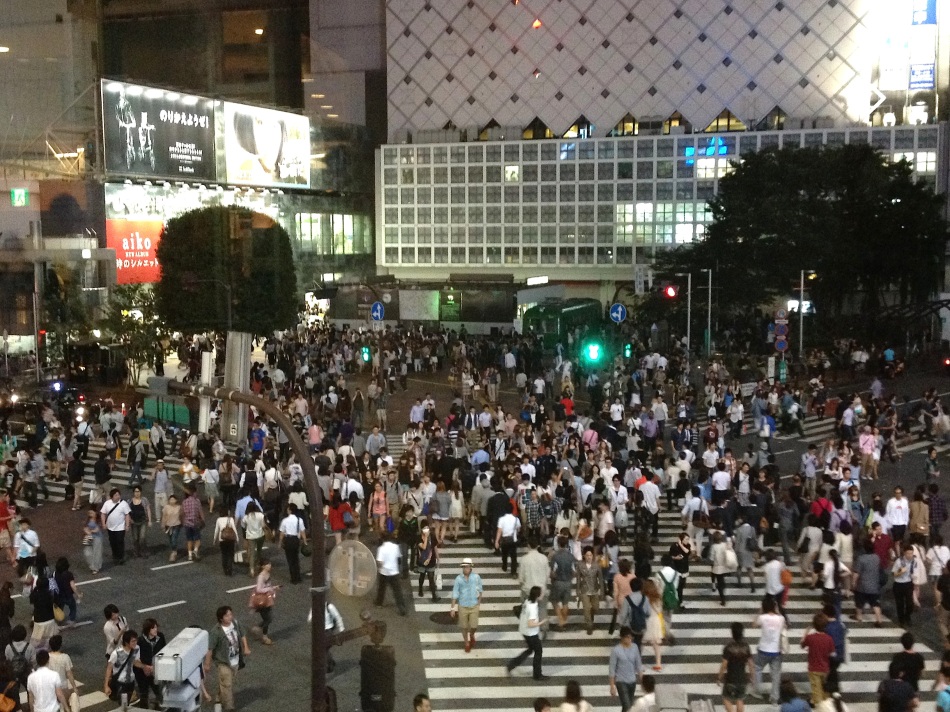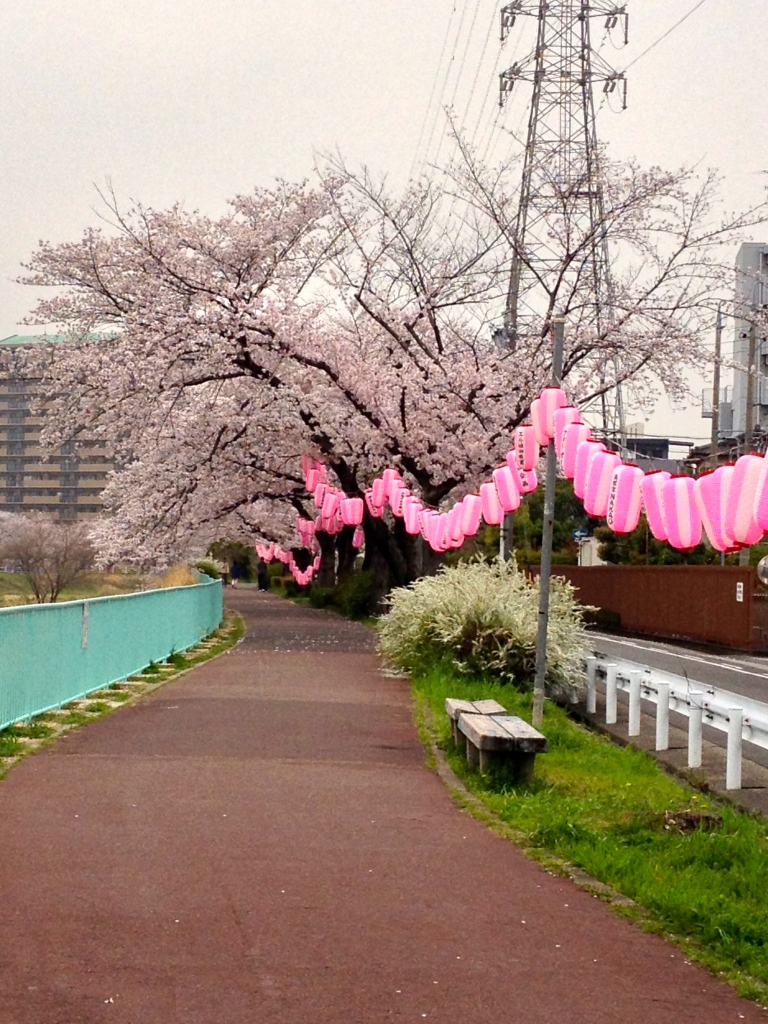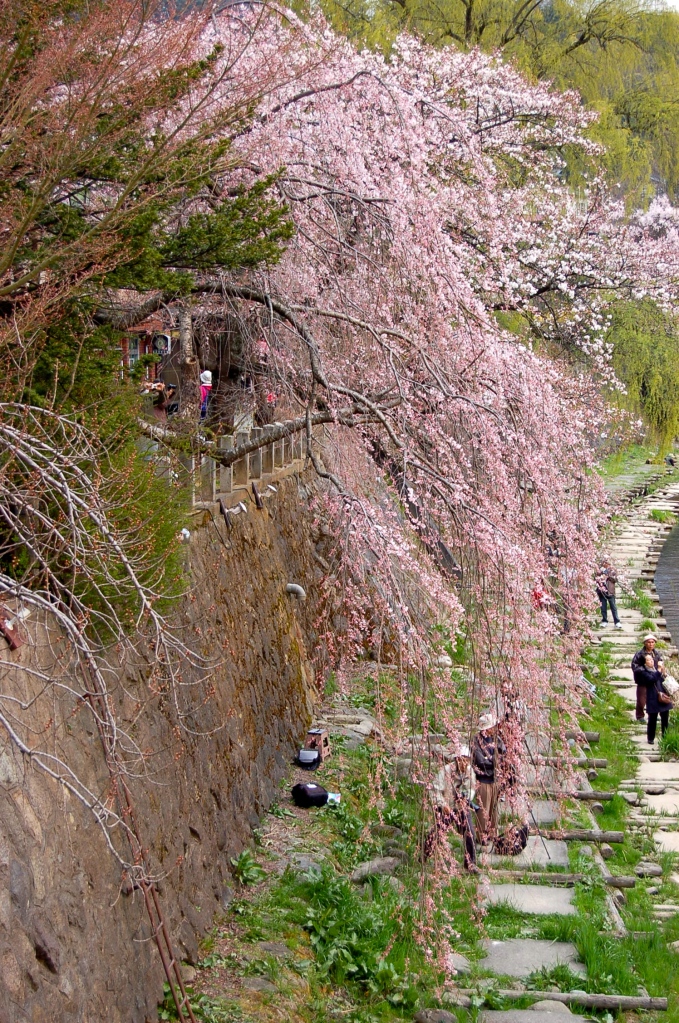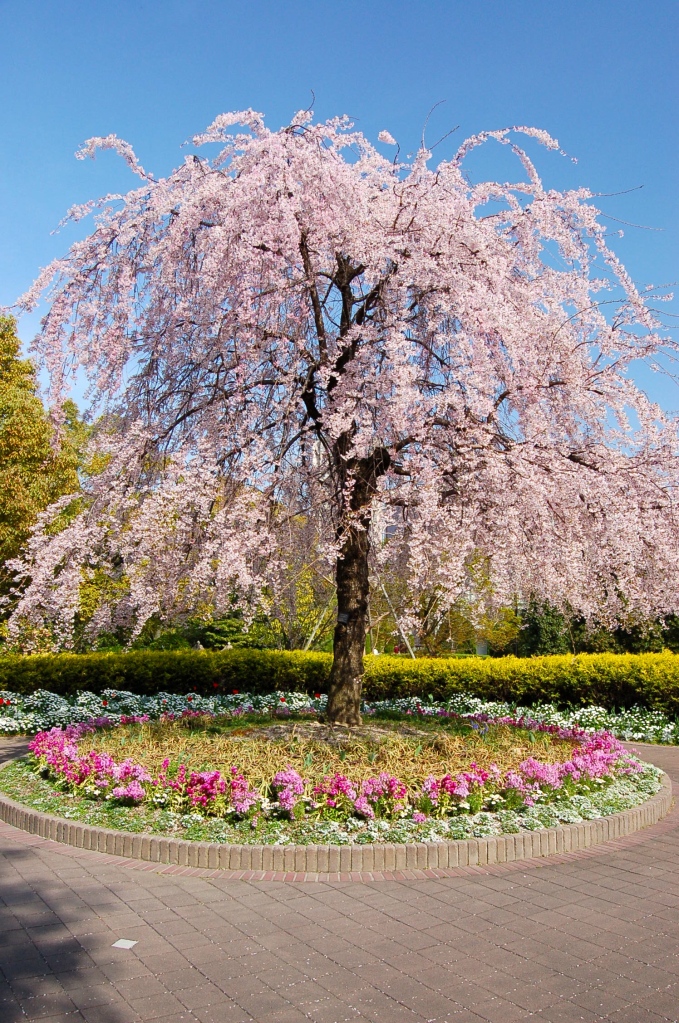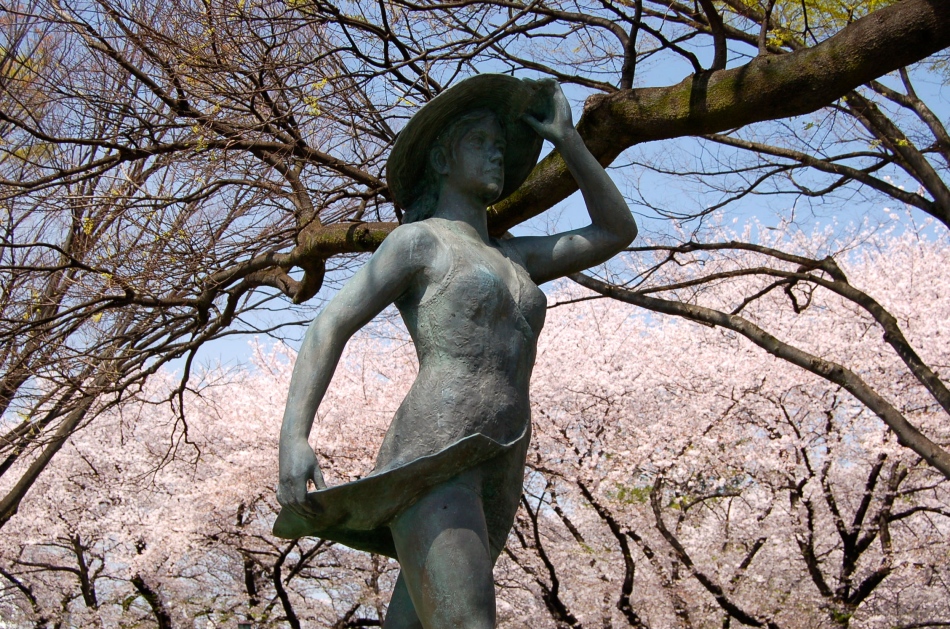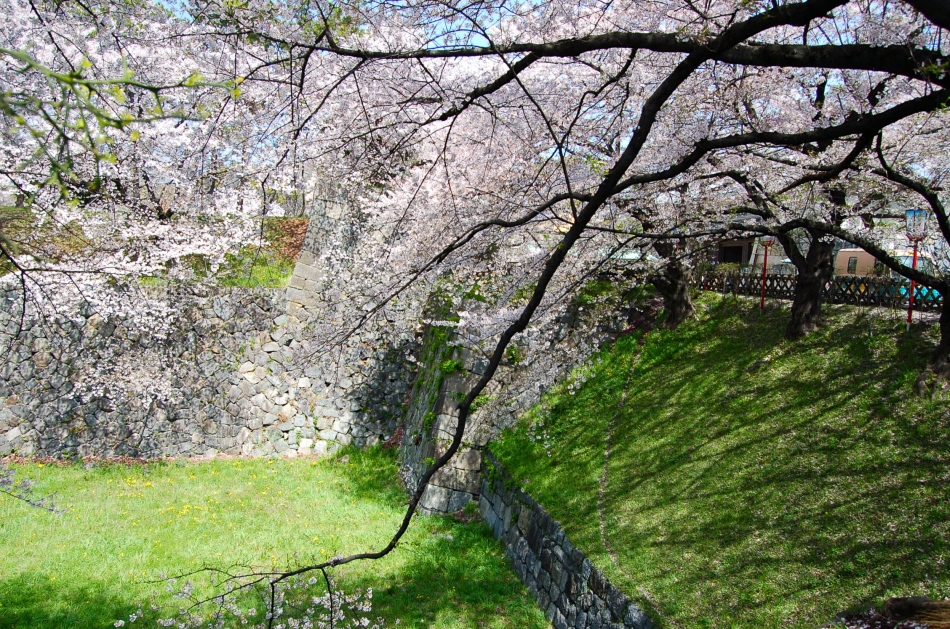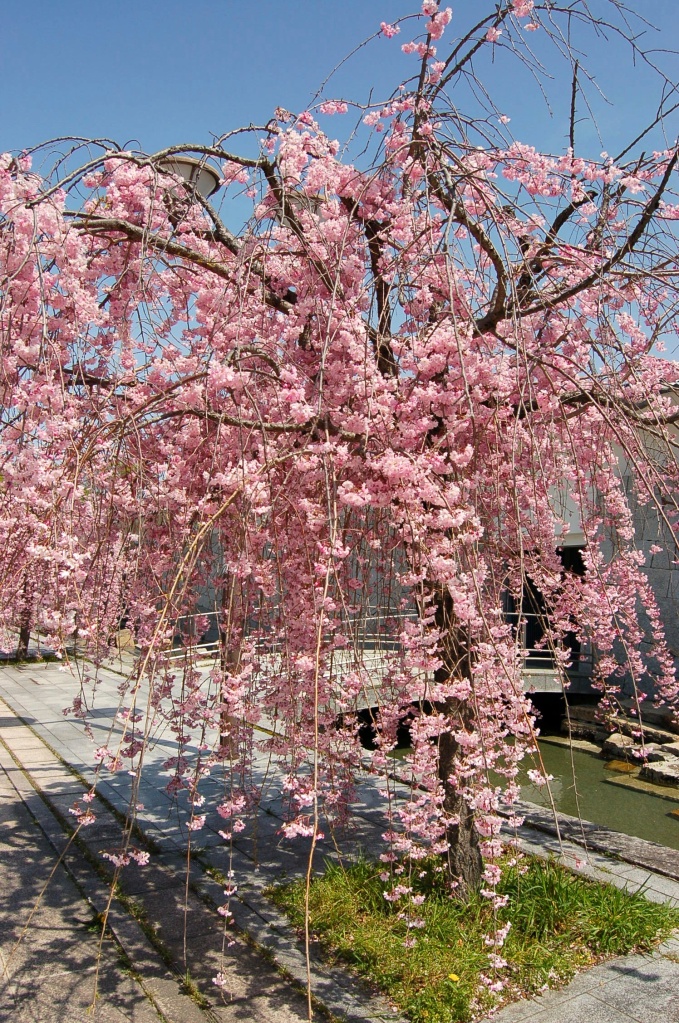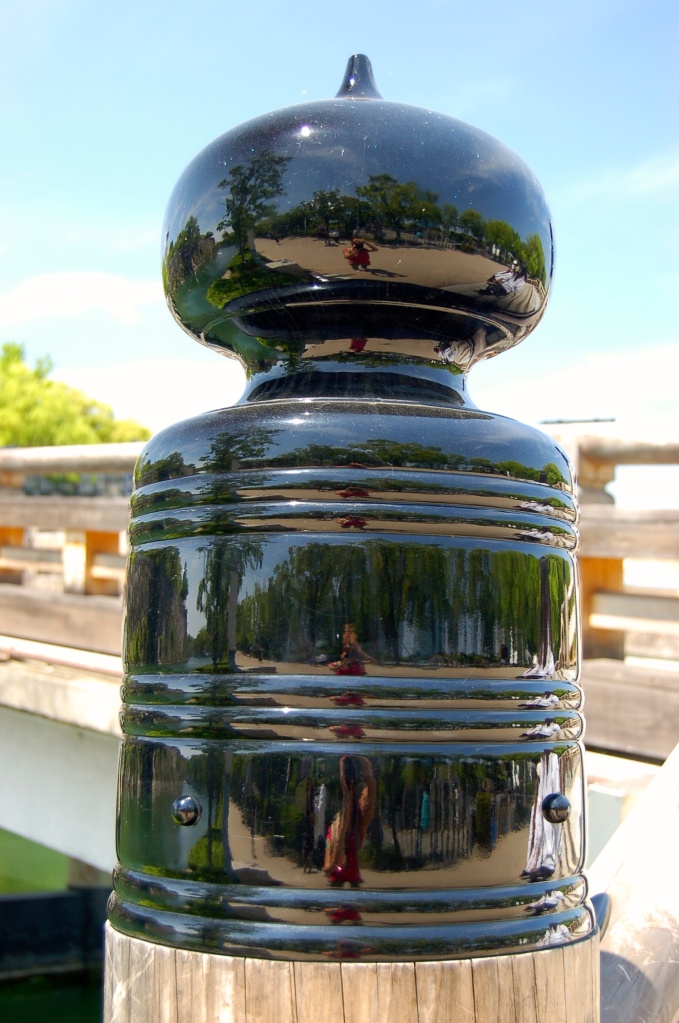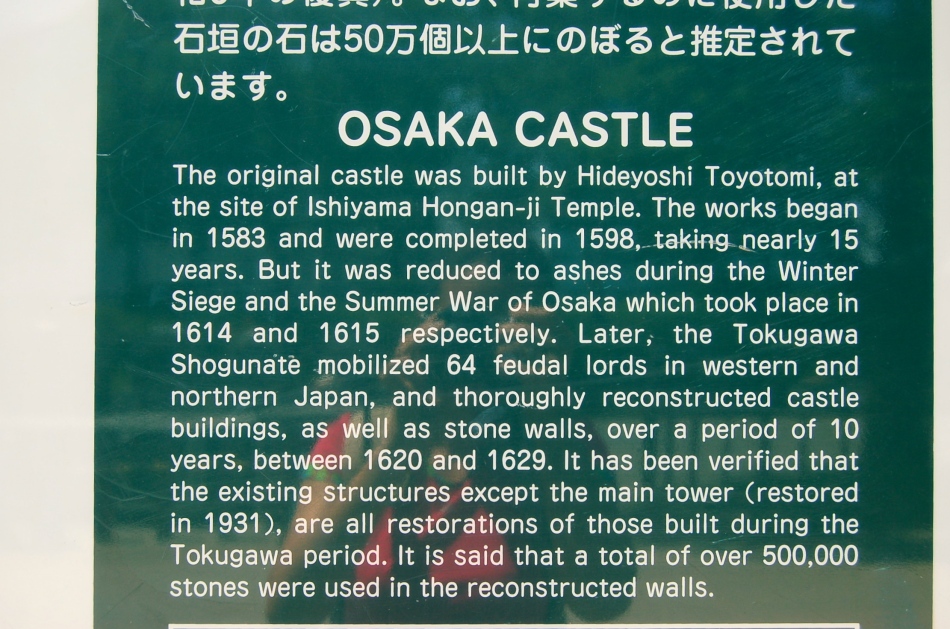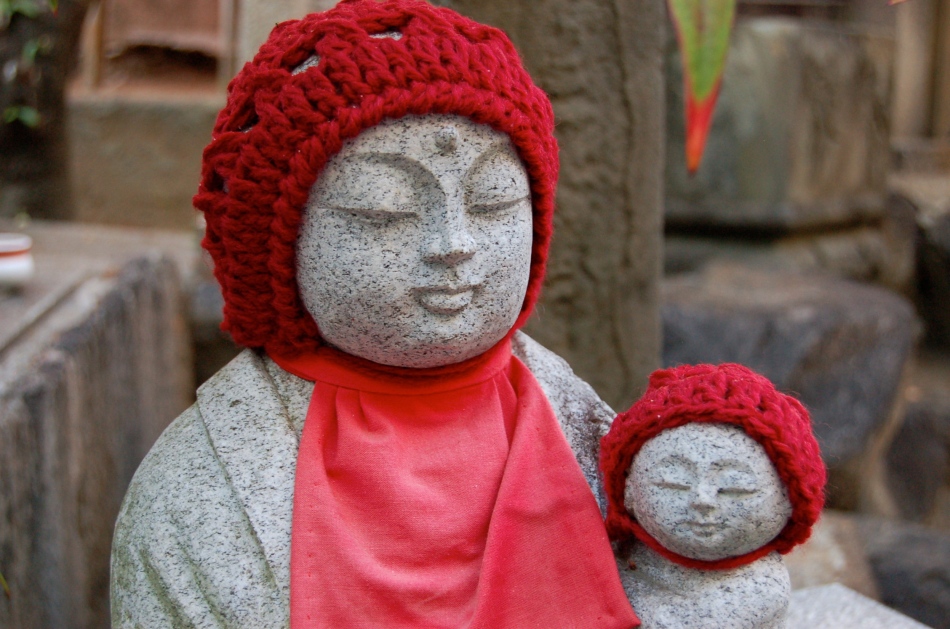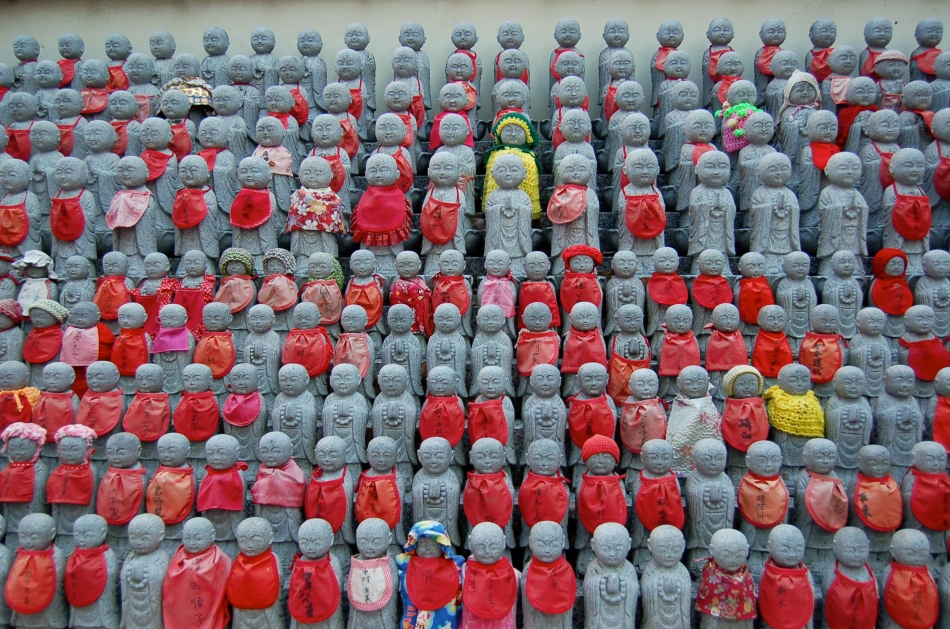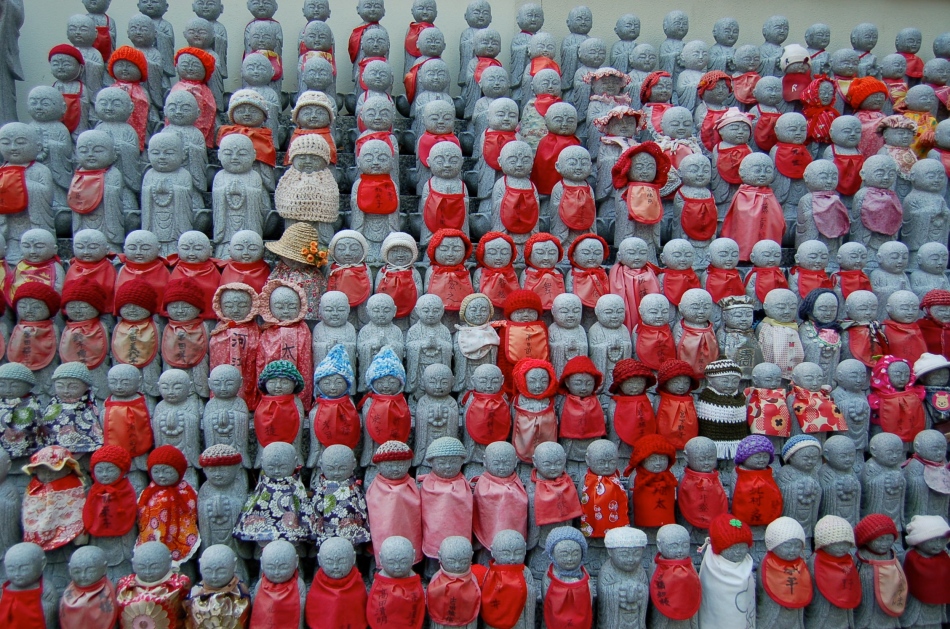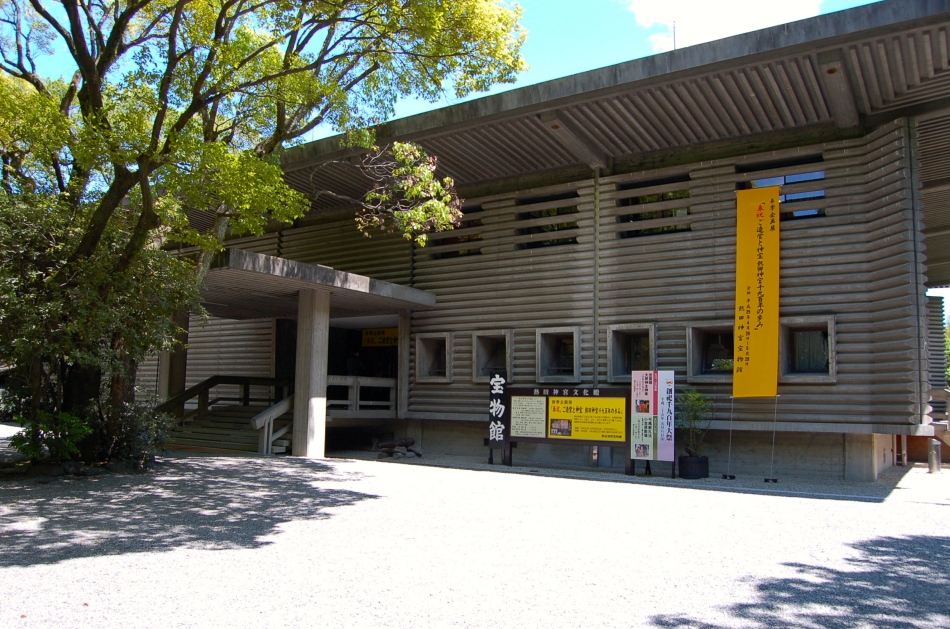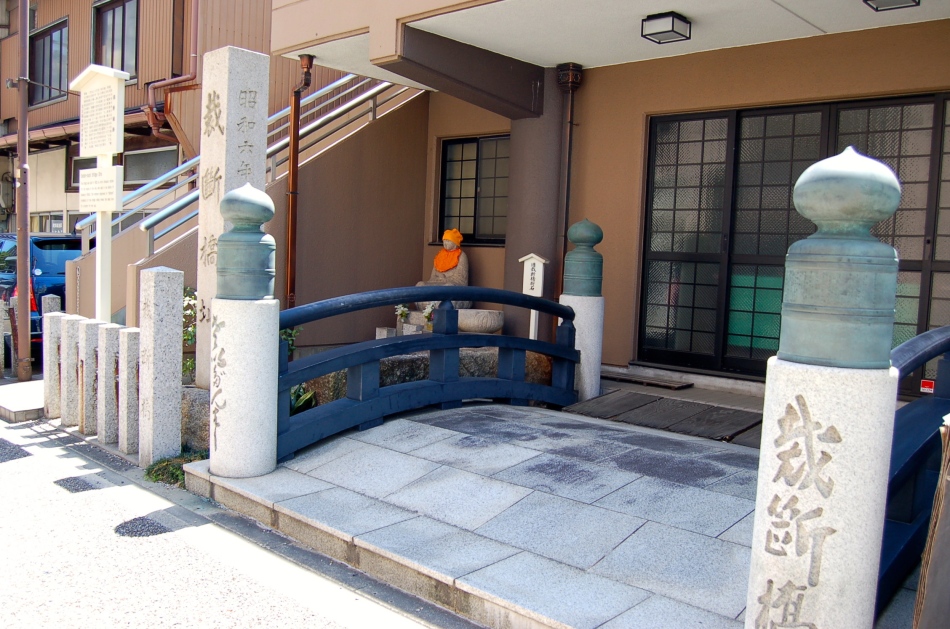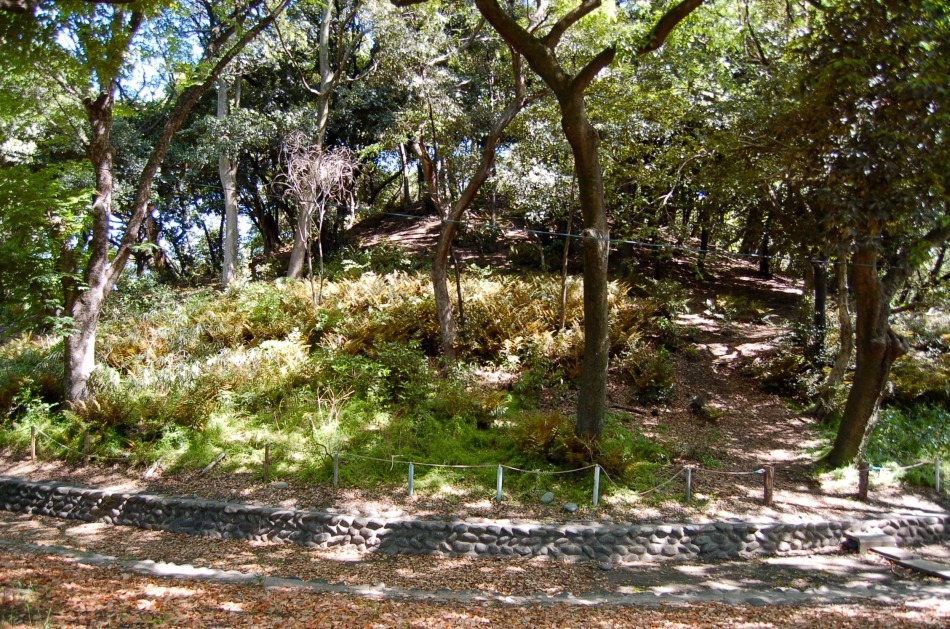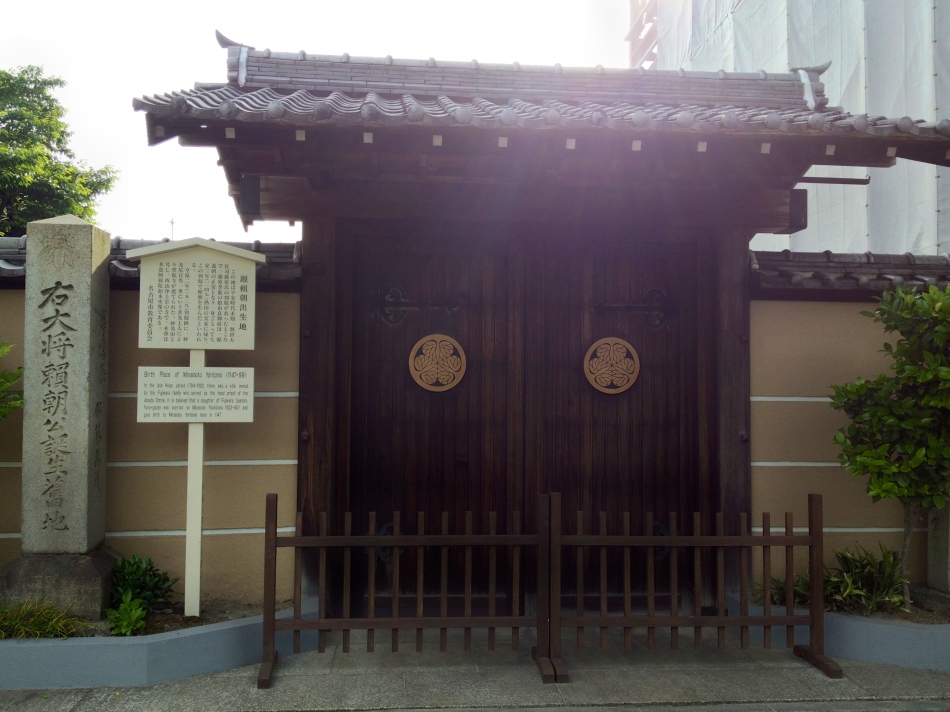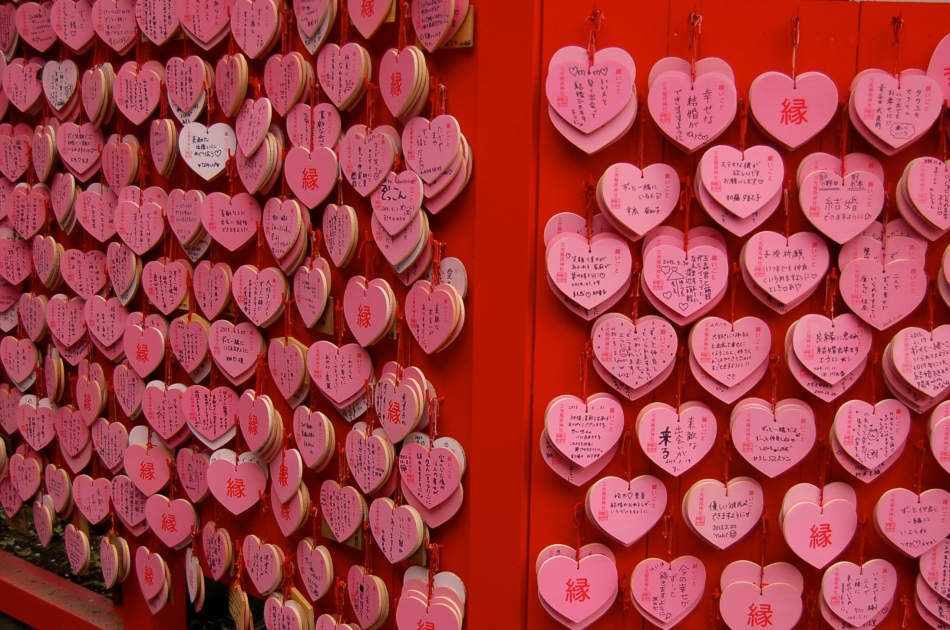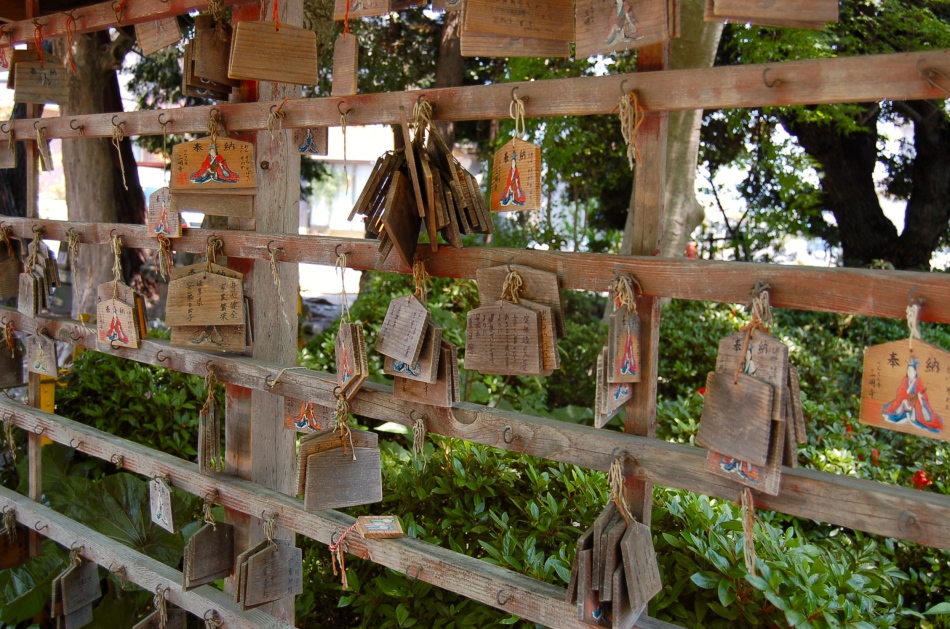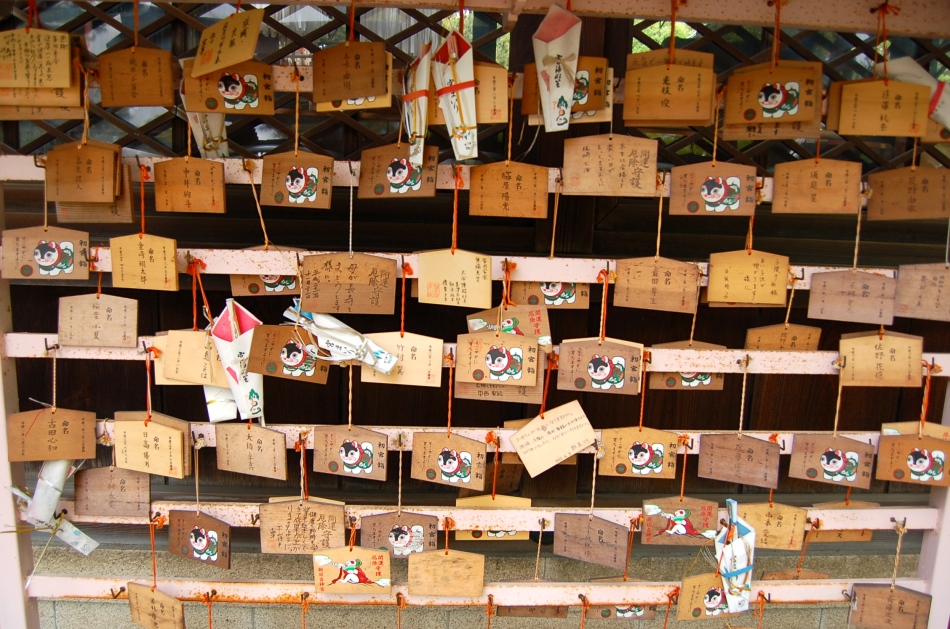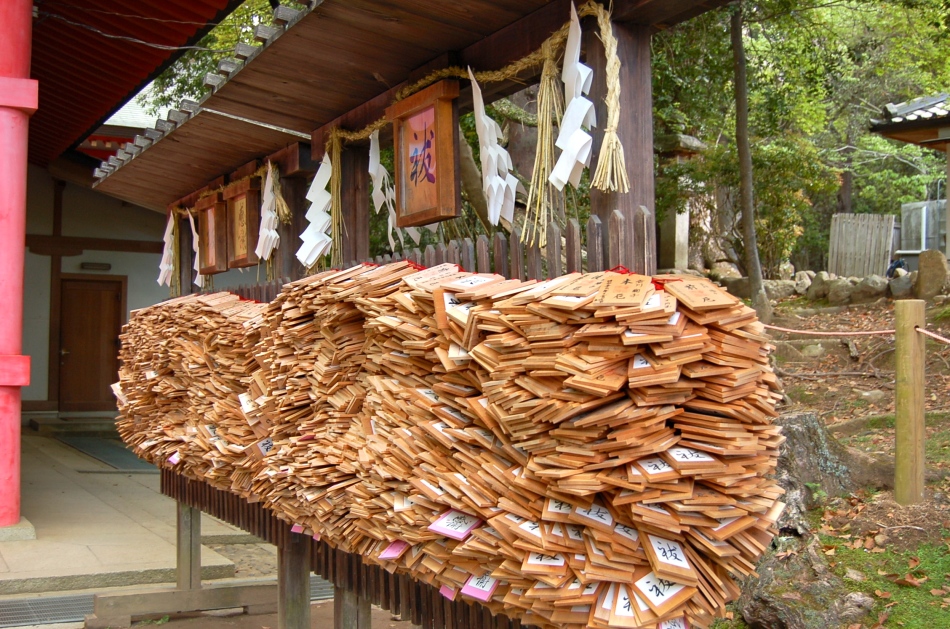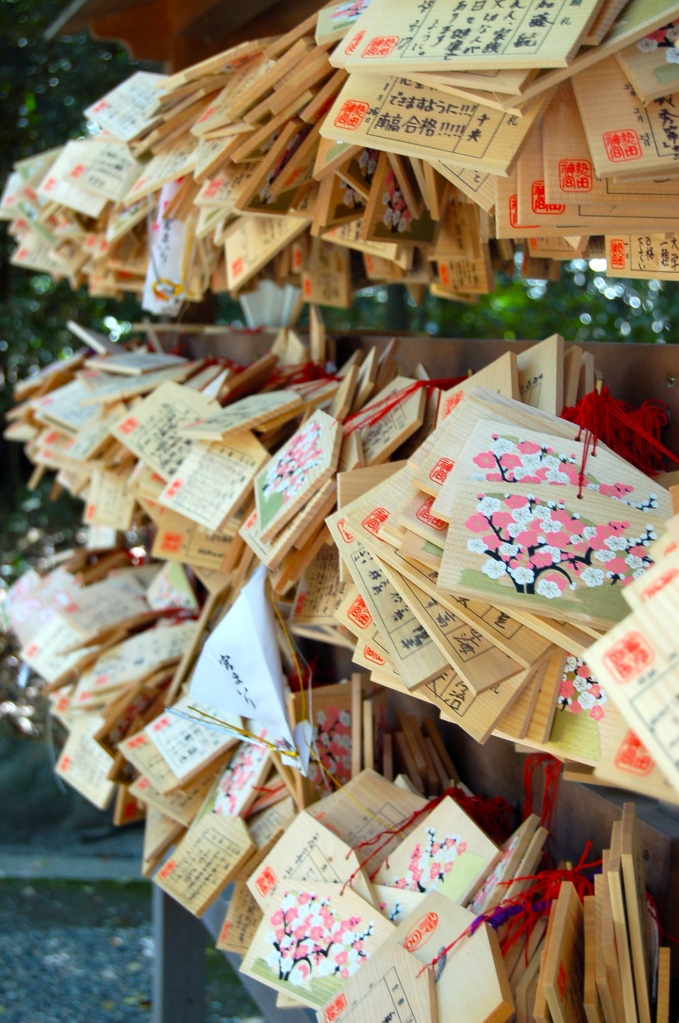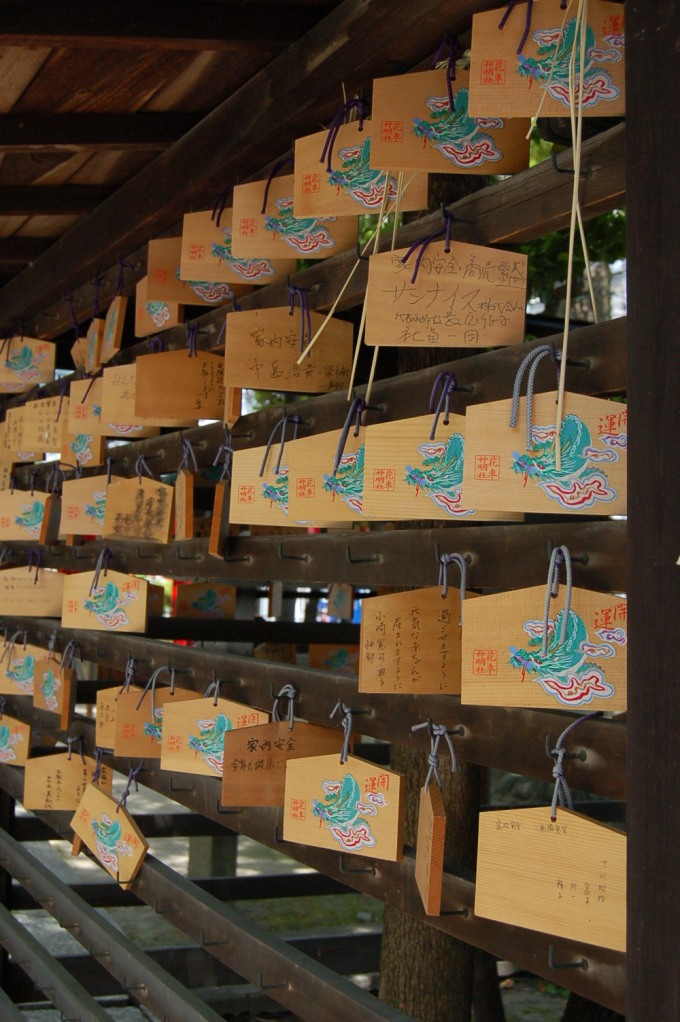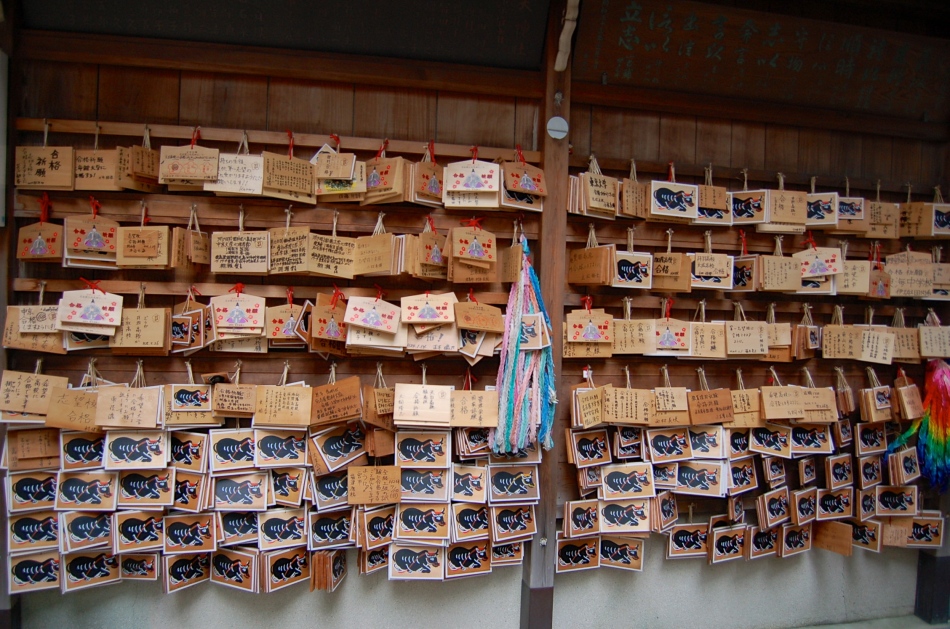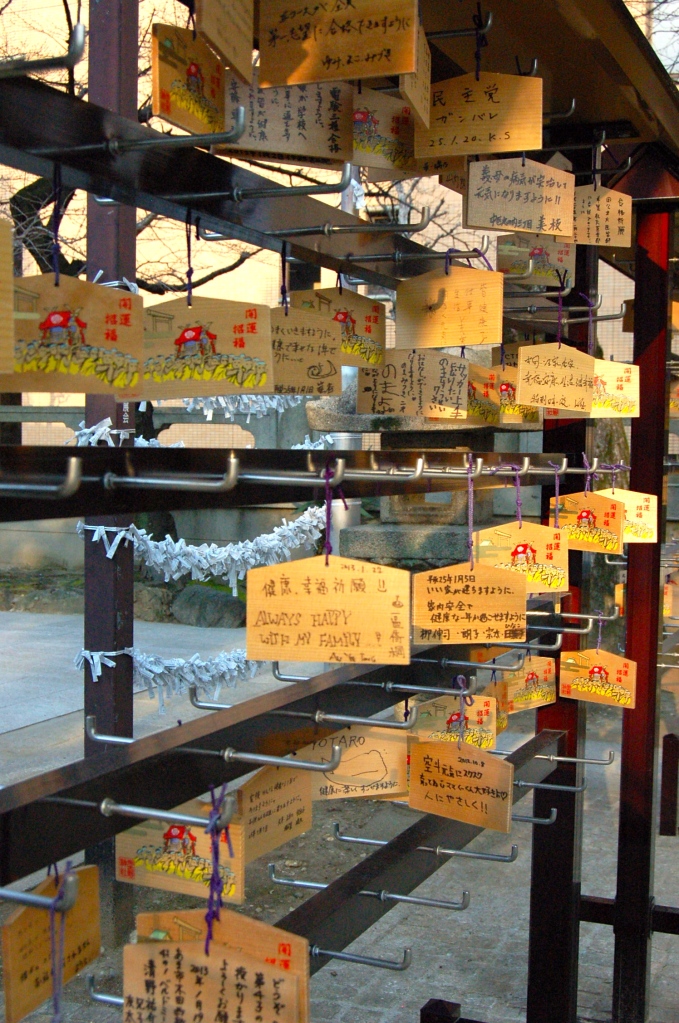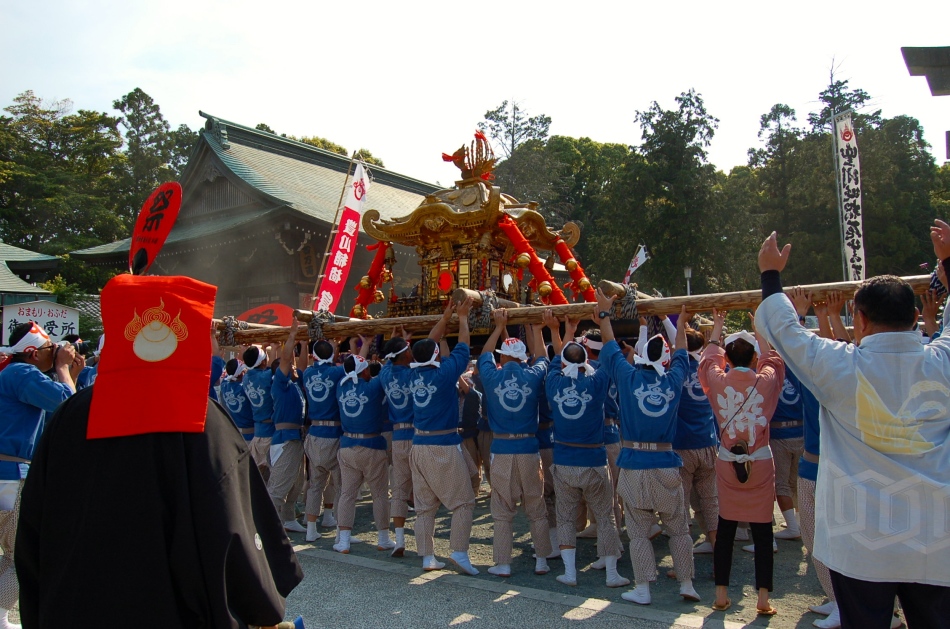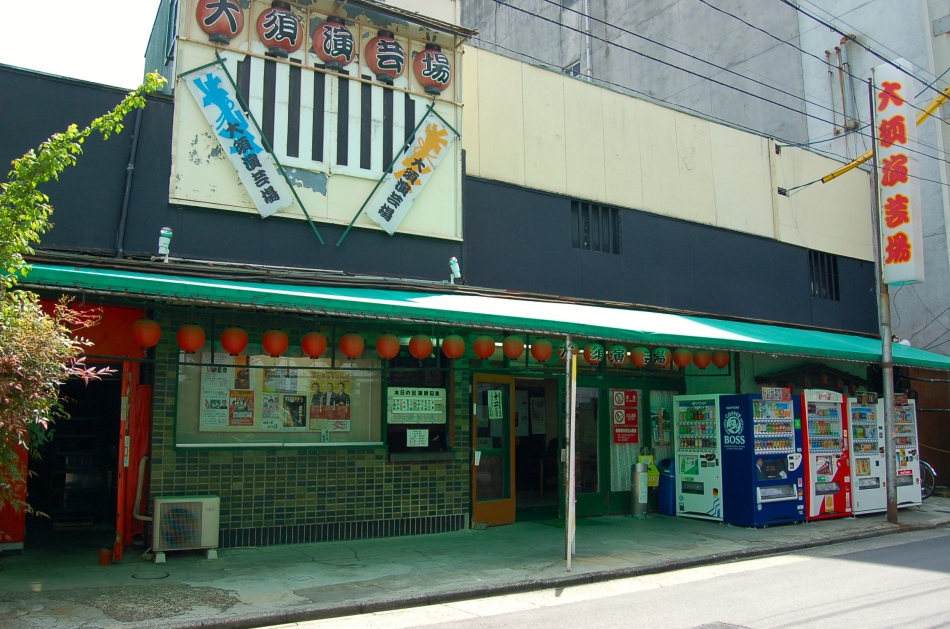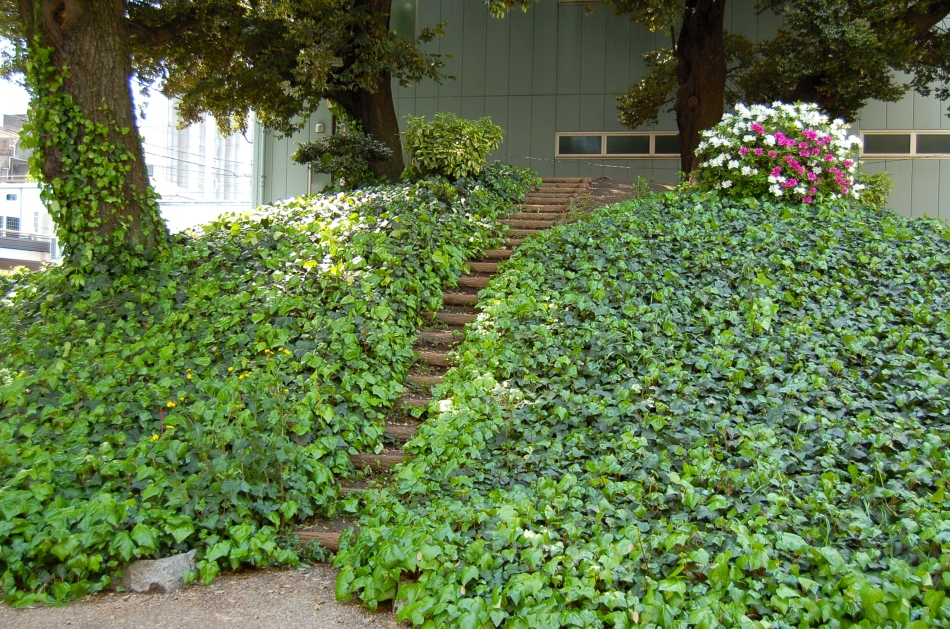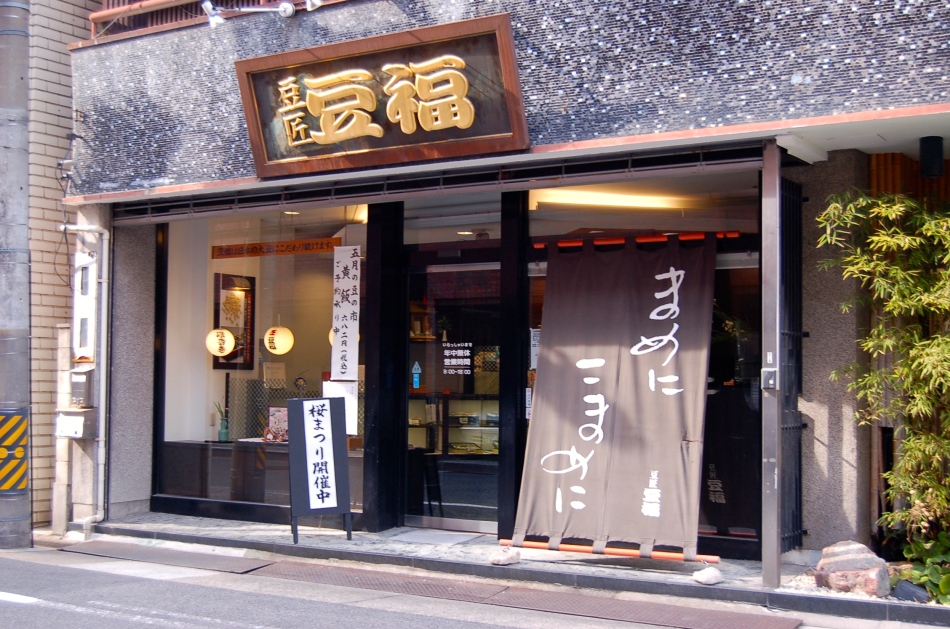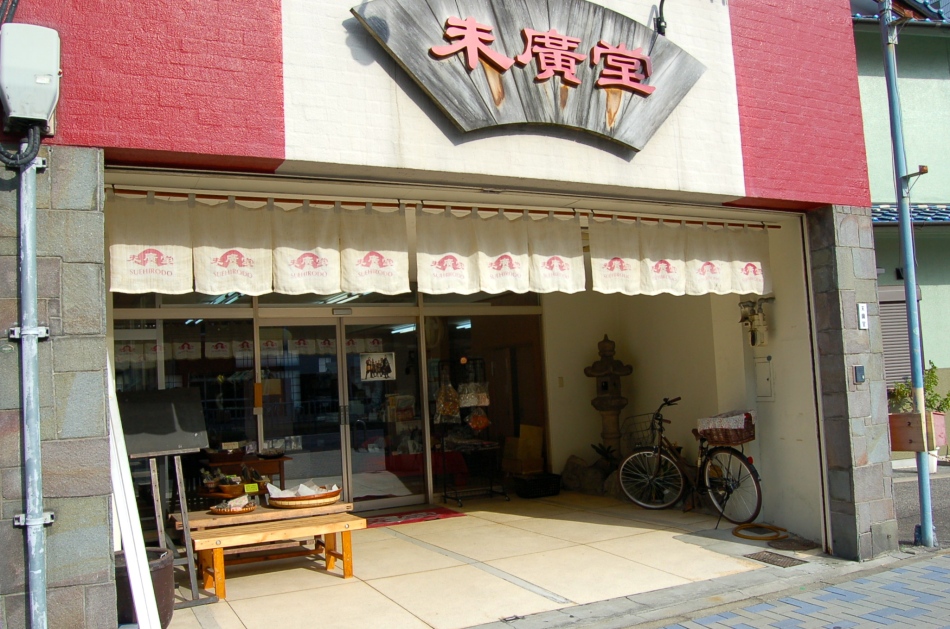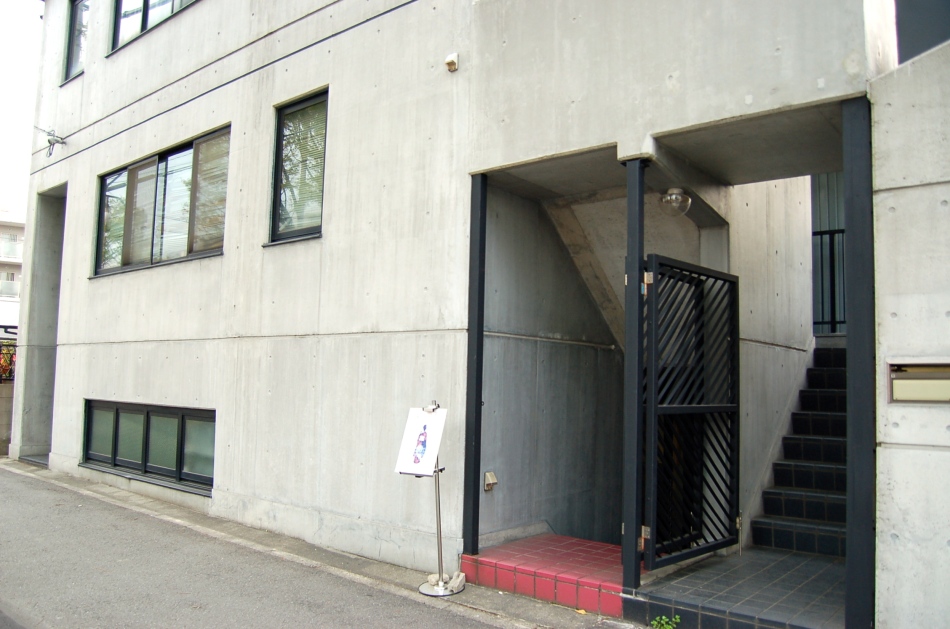Memoirs of Kyoto
This is my second visit to the old capital city of Kyoto, Japan. Previously I visited the city for a day and did not seem to finish what I had on my wish list of places to see. It was not possible! There is so much to see around Kyoto! So I went for another visit and this time I managed to visit the Nijo Castle, the Kyoto Imperial Palace, visited the Golden Pavilion once again, then last but not the least the Fushimi Inari Shrine. So come along for a walk through my photo gallery of my second visit to Kyoto, the ancient capital of Japan.
Nijo Castle. This UNESCO World Heritage Site was built in 1603 as a residence of Tokugawa Ieyasu. The castle was finished around 1626. Some parts of the castle was damaged by fires on 1788, remained closed and empty until it was donated to the city of Kyoto in 1939 then opened to the public the following year.
The castle ground area is vast 275,000sq metres of two main palaces – The Ninomaru Palace as well as the Honmaru Palace surrounded by traditional Japanese gardens, moats, inner and outer gates. The palace buildings are mainly built in timber and beautifully made. Unfortunately, as with any World Heritage Sites, photo taking is strictly prohibited inside the palaces.
Kyoto Imperial Palace. Formerly the residence of Japan’s Imperial Family until 1868 when the capital city was moved to Tokyo in 1869. The current structure had been reconstructed around 1855 after the original palace was burnt and moved around the capital over the centuries. The palace grounds are elongated and filled with beautiful tree groves and broad gravel path where tourists can walk through.
The Imperial Palace is open to the public and private tours are held frequently throughout the day. I have indicated ‘private tours’ as the gates are not open to just anyone who walks in. If you wanted to join a private tour it is best to go with a tour group. Otherwise you have to make reservations, be prepared to bring your passport and fill out security forms prior to being allowed in. Once inside the group is accompanied by security at the front as well as the end of the group. It is discouraged to walk away from your group or venture out on your own. The inner buildings are private and not available for viewing.
Kinkaku-ji (Golden Pavilion). Formally called Rokuon-ji, which literally translates to The Temple of the Golden Pavilion, dates back to 1397 is a Zen temple formerly the retirement villa of the shogun Ashikaga Yoshimitsu. The present structure was rebuilt in 1955 having been burnt numerous times in the past. The impressive structure covered in gold leaf is what’s left of the shogun’s villa. It overlooks a big pond and the complex is surrounded by a classical Japanese garden design. Each of the three floors represent different architectural design to reflect the extravagant and wealthy aristocratic circles of the Kitayama culture of Kyoto.
This was my second visit to the pavilion and it was not boring to see it once again. This time around I had a beautiful sunny day for my photos as oppose to the cloudy and rainy day during my first visit.
And last…but not least The Fushimi Inari Shrine, which I had been beating myself for missing out since my last visit. For those of you of have read the book and seen the movie – “Memoirs of a Geisha”, this shrine would, hopefully, bring back a sweet memory. This was one of my favourite books and the movie was just an ‘icing on the cake’ as they say. Fushimi Inari was one of the places where they filmed the movie. Remember the scene when Chiyo as a young girl, after she met the Chairman and got given the change from her sweet treat, ran through a series of torii gates to make her wish to one day meet him again. Well, call me a romantic, but it was here at Fushimi Inari Shrine where she ran through, and I wanted to do the same…
Fushimi Inari Taisha. The shrine is the head shrine of several thousands of shrines (32,000 sub shrines) around Japan dedicated to Inari, the shinto god of rice. Also famous for its thousands of vermilion torii gates donated (paid by) Japanese business. If you are keen, follow the trail of these torii gates that takes you up the wooded forest towards the sacred Mount Inari. The whole trail could take you up to three hours to go up and back. At the summit of the mountain one can enjoy a view of Kyoto.
When my hubby and I went it was such a hot day and I forgot to spray myself with insect spray. We went up to, I believe, level 2-where the track splits into a circular route. We were exhausted and decided to go back as my legs already resembled a polka-dot legging. But, I still have to admit, it was very much worth the visit. It was an experience walking through these torii gates.
And that, I’m afraid, was my farewell for Japan (for now.) I have enjoyed my stay exploring and learning about the country, a little bit of its history, the people and the food! I would love to have the chance to learn more, see more and experience more of Japan. I hope you all will get the chance yourself.
Stay tuned for more adventures around this weird and wonderful world of ours. Up next…Gold Coast, Australia!
The Seaside Resort City of Gamagori
Gamagori is in the middle of Japan and easily accessible by a 30-minute train ride from Nagoya. It is known for its boat racing, one of the three kinds of gambling in Japan – Horse, Bike and Boat Racing. It is also known for its numerous marine museums and onsen (hot spring) spas. But the most important attraction I was interested in was the Takeshima Island, which can be reached from the main land through a 387 metre long bridge. On the island are a collection of different plant species considered a Japanese national treasure as well as a buddhist temple.
This day trip was one of the last few trips I did before leaving Nagoya. Once you step out of the train station you will be welcomed by an imposing tall yacht in the middle of the roundabout as an indication that you have landed on Gamamori – The Seaside Resort City.
Then off I went to find my way through towards the island I was after. From here a couple of blocks towards the port area another impressive timber building meets visitors – The Natural History Museum – Sea of Life.
Not far from the Natural History Museum is the Takeshima Aquarium but as it was a very warm day I gave that a miss and proceeded to more interesting views ahead of me. By this time I could already smell salt water and feel a light breeze on my face. Then I caught a glimpse of Takeshima Island looming in the not too far a distance.
I had to contain myself from running off towards the island and wander around the Mikawa Bay National Park. A small park with a shrine and the Seaside Literary Memorial, just across from the island.
Then it was on to the bridge to take me to the Takeshima Island. The view across the bridge was beautiful. Maybe it was just being within close proximity to water, which I haven’t been near for a while, but it was just the cleanliness and simplicity of the island that lifted my spirits that day.
When I got to the other end of the bridge I was quite excited to climb up the long stretch of stairs up the to Yaotomi Shrine, known for its gods who bring luck for marriage and giving birth. There are many ways to reach the shrine, but if you’re not very interested, you can just wander around the whole island. It is quite easy to walk through even on a high tide such as that day I was there. When the tides are low visitors can walk to the island by strolling through the waters. Apparently there are treasures to be found on and around the island.
Then it was time to say farewell to this beautiful island of Takeshima and the resort city of Gamagori.
It was a good day.
Farewell Summer…Hello Spring!
I’m back! and so glad to be. Now you might be wondering why it is Spring after Summer. Well my few weeks of absence have been occupied by transitioning from Japan and back to Australia. So in the process I bid adieu to Japan, in the northern hemisphere, during summer and entered Australia, in the southern hemisphere, towards the end of winter.
In the last few weeks I spent in Nagoya I got to enjoy some summer festivals – Japanese matsuri style. So here are some photos of famous summer festivals in Japan. I hope you enjoy it.
Tanabata in Ichinomiya. Tanabata, also known as the Star Festival, in Ichinomiya is one of the three biggest Tanabata festivals in Japan. Celebrated during the last weekend of July (25th-28th) this year. The festivities builds up from Thursday to the grand climax on Sunday. Anyone is welcome to celebrate with the locals. Many come in their beautiful yukatas, enjoy the music and colourful fukinagashi (streamer) decorations, write up their wishes on the tanzaku, and feast on yummy street food!
Bon Odori in Goju Hachiman. Bon dancing is a traditional dancing that locals do to welcome their departed spirits during the bon week. When one wants to join in the biggest and best bon dancing, or all night bon dancing, one visits Goju Hachiman. I was particularly curious about this event in summer. Bon dancing is so cool, I couldn’t help myself but join in the fun!
Goju Hachiman is well known for it’s small traditional town image maintained since the 17th century. The town is very easy to walk through and the locals are friendly. Have you been to a cafe or restaurant and saw your meal displayed on the window? Plastic replicas of food are very famous around Japan and many asian countries and out here you get to experience making one! Goju Hachiman is the centre of making food replicas.
What seemed like a sleepy town came to life after dark when suddenly people were walking through the streets, dressed in their yukatas, started making their way to a part of the town where the dancing was happening that night. After dancing all night you can stay over in one of the many ryokans where, if you haven’t got a yukata, usually lends their guests their very own ryokan-inspired yukata for you to dance in.
So these were two of the many summer festivals in Japan and I am so glad to share them with you. In my next posts I will show you fun places I visited during my finals weeks in the wonderful country of the rising sun. I hope to see you again very soon!
Was it a Dream…or was Sarah Brightman a bit too dreamy!
I had the chance to watch Sarah Brightman live during the Nagoya (Japan) leg of her Dreamchaser World Tour. She is known as the world’s biggest selling soprano, and I can understand why, She has a great voice! I must admit. From her early stage presence in Cats, numerous albums and of course The Phantom of the Opera’s Christine – which was written specifically for her. I hope she didn’t crack any glass windows especially when she did the last note of the Phantom of the Opera theme song.
She is currently touring for her 11th album Dreamchaser and to promote her lifelong dream to travel on the Space Station, orbit the earth and record songs whilst she in space! Here are some photos I managed to take of that memorable night.
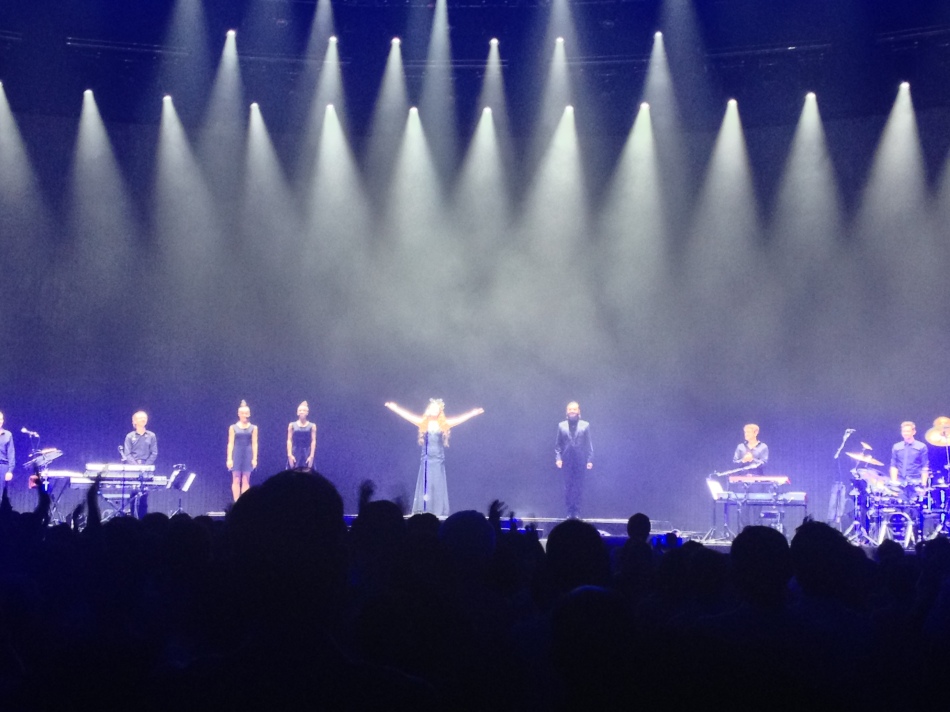 It was a good night of songs and light show. Very dream like. I went home in a trance-like feeling.
It was a good night of songs and light show. Very dream like. I went home in a trance-like feeling.
Have a great weekend everyone.
Cee’s Fun Foto Challenge: Winter
The past winter was my first to experience living in a country where there were four seasons. Although in Nagoya (Japan) snow does not happen compared to other areas of the country. So, as they say, if winter doesn’t come to you…you go to it! and we did. We went about an hour outside the city to Mount Gozaisho and enjoyed a real winter.
- We rode a cable car to go up the mountain
White is beautiful!
Don’t forget to visit Cee’s Fun Foto Challenge for the new list this week!
12 Chapters of Nagoya Tour: Chapter 12 Power Spot Course
And the end has come. Chapter 12, the last of the 12 Chapters of Nagoya Tour. It had been wonderful to experience these walking guides each week for the last 12 weeks. I must admit some of the sites were not as interesting as others, but looking at the overall bigger picture they all tied in and made sense. Through these walking guides I have learned so much more about Nagoya and its history; about the stories behind significant tourist places; and a little bit about what lies behind the Japanese culture. I am not saying I have uncovered what the culture is about as it is a deep-rooted traditional culture. First you have to learn the language and have closer relations with traditional and modern families to begin to understand these people.
I thoroughly enjoyed the chapters where visiting temples and shrines were involved as I am quite intrigued by the intricate architectural details of the buildings and the ritualistic ceremonies held ever so often. I have enjoyed collecting Goshuin, calligraphy stamps from temples and shrine. I will post them next time.
For now, let us take another walk through the Power Spot Course. This power spot course proved to need more power walking indeed. I have cheated on this chapter as the weather have become hotter, more humid or rainy to make leisurely walks. I have done this course in instalments. But it is not a race, well not for me anyway.
1. Kogane Shrine, Yamada Tenmagu Shrine. This shrine is popular for those seeking more wealth and success in their studies. Around the shrine it is evident that many have prayed for these requests as it is heavily littered with statues of maneki-neko – the beckoning cat, known for bringing good luck to its owner, as well as daruma dolls – a symbol for perseverance and good luck.
2. Seimei Shrine. One of the three shrines to pray for success in romance, which can be accomplished through this walking course, Seimei Shrine is deceivingly tiny. Dedicated to Abe-no-Seimei an esoteric cosmologist who dispelled snakes that lived in the marshes around the area. The incantation performed here is popular to dispel evil and fortune-telling to consummate love.
3. Ueno Tenmangu Shrine. Built over 1000 years ago, the shrine has two cows at the entrance. These cows are famous for those seeking relief from any affliction to their body by rubbing the corresponding part of the cow’s body. Others visit the shrine to pray for success in examination as well. Unfortunately, I didn’t get the chance to see the beauty of this shrine as when I arrived at the site it was fully covered with scaffolding. Maybe another time.
4. Shiroyama Hachimangu Shrine. I visited this shrine in another chapter and liked the area. Although I did not find the ‘marital tree’ worshipped for happy marriage and restoration of relationships, I enjoyed the other historical remains present in the shrine grounds. Shiroyama Hachimangu Shrine is one of the three shrines of love.
5. Takamu Shrine. The third shrine for success in romance. Takamu Shrine is also known for the Motokoi legend, where one could drink from the water fountain of the good well that promises a start to a new romance. Famous amongst young women in search for love.
6. Sakuratenjin Shrine. Old blending in with the new, this shrine is set in between commercial buildings in Nagoya. I have visited this shrine as part of another chapter but learned a new information in this chapter. The cow stone statue is known as the Wishing Water Cow. It is believed that when you make a wish and using the ladle to pour water on the cow, with the number according to your age, your wish shall come true. I would have been there a long time.
7. Atsuta Shrine. Quite a famous shrine this one. For these chapters alone it had been mentioned twice already, in Chapter 3 and Chapter 8. I like this shrine as it has a beautiful property around it. There are many festivals and special days attributed to this shrine so one would not be bored visiting it many times.
8. Gokiso Hachimangu Shrine. This shrine is small and older in its appearance. There is a large boulder in the shrine called the ‘god stone’ the god of long life. Tokugawa Ieyasu was known to have prayed here for the Battle of Nagakute, considered as one of the largest and most important battles in the history of Japan.
And that concludes the 12 Chapters of Nagoya Tour. I hope, for those who have read and followed the chapters, have enjoyed learning something new about Nagoya and a little bit of Japan’s colourful history. If you would like to catch up with previous chapters, here they are:
Chapter 1: Nagoya Castle Course
Chapter 2: Course covering region of the Owari Tokugawa family and the Cultural Path
Chapter 3: Oda Nobunaga “Owari’s Foolhardy Youth” Course
Chapter 4: Course Covering the Birthplace of Toyotomi Hideyoshi and Kato Kiyomasa
Chapter 5: Course for Experiencing Nagoya Manufacturing
Chapter 6: Nagoya Stroll Course
Chapter 7: Funtown Osu Course
Chapter 8: Atsuta History Course
Chapter 9: Course Featuring the Townscape of Arimatsu and the Battle of Okehazama
Chapter 10: Arako Walking Course of Maeda Toshiie
Chapter 11: Shiroyama and Kakuozan Course
Thank you all for following and visiting. Looking forward to your future visits next time.
Travel Theme: Flow
Flow, is to move along in a continuous and steady stream or current. Flow is the Travel Theme over at Where’s My Backpack this week. My take on flow is from our visit to Tokyo last year. One of the top things to experience in this vibrant city is the crossing along Shibuya. This district is known as a shopping, fashion and a favourite meeting place around the train station. Before coming to Japan, my image of Tokyo was always about this crossing.
Both during the day and at night, the steady flow of people traffic is non-stop, it’s quite amazing how this place doesn’t run out of people!
Don’t forget to pop by Where’s My Backpack for more of this theme.
Weekly Photo Challenge: Fleeting
I’m late for the other week’s challenge, but I couldn’t help myself. Here’s my addition to the Fleeting challenge. I hope you all had fun browsing through what everyone has contributed to this challenge.
Sakura, or the cherry blossoms, are revered flowers here in Japan. It is said that the transience of these flowers symbolises a Japanese cultural tradition, for its blooming en masse as extreme beauty followed by a quick death. It had been associated with mortality as the ephemeral nature of life. These beauties have to be enjoyed really quickly as they will suddenly go as quickly as they blossomed.
12 Chapters of Nagoya Tour: Chapter 11 – Shiroyama and Kakuozan Course
We have arrived to the penultimate Chapter 11 of the 12 Chapters of Nagoya Tour. It had been a great few walking trips around the city of Nagoya and I have learned so much more about the city and its history. I hope you have enjoyed the previous chapters and continue to enjoy exploring with me. This chapter takes us through the neighbourhoods of Shiroyama and Kakuozan including Nittai-ji Temple that enshrines the remains of buddhism founder Shaka. So once again, come along with me for a short walk through history.
1. Nittai-ji Temple. A fairly young temple built in 1904 as a temple to represent the relationship between Thailand and Japan as well as a repository for the ashes of Shaka, the founder of buddhism. A gift from King Chulalongkorn of Thailand to Nagoya and hence the name Nittai-ji Temple (Japan-Thai Temple.) The grounds around the temple is vast and aside from the main hall there is a beautiful wooden 5-storey pagoda.
From the subway station the walk through to the temple is lined with trendy shops and cafes. On the 21st of each month there is a fair – kobo-san, along the street approaching the temple which bustles of stalls and people.
2. Yokiso. Built in 1918 as a vacation villa by Ito Jirozaemon Suketami, the first president of Matsuzakaya department store, a large and famous department store in Nagoya. Originally spread through a vast 35,000 square metres, only about 9,000 square metres remain at present. It has a beautiful Japanese garden that features an old bungalow moved here from the Owari Tokugawa family mansion and an old bridge. It also has a shrine with lovely tunnel of torii gates.
3. Nittai-ji Temple Hoanto. A short walk from the Nittai-ji Temple is the Hoanto or the Gandhara pagoda. Built in 1918 the pagoda is designed according to traditional buddhist architecture from Japan and India. The ashes of Shaka is believed to be imbedded within the stone pagoda. It is 15 metres high and quite different from the other pagodas I’ve previously seen in temples here. The huge area is surrounded with tombs.
4. Dairyu-ji Temple. This temple was built to grieve for souls of the dead workers during the construction of the Nagoya Castle. The Arhat hall houses 500 Arhat statues but, unfortunately, it is not open for public viewing.
5. Soo-ji Temple. This temple was built by Tokugawa Yoshinao to grieve for his dead mother. It is said that Yoshinao wrote the characters on the plaques at the entry and on the main hall. The main hall was formerly used as a sumo stable during the annual Nagoya sumo tournament as well as a famous venue for concerts by a variety of artists. The main hall was on top of the property where one had to climb up a few steps and although the hall was a bit old it was still beautiful.
6. Shobo-ji Temple. This temple was built by the daughter of Saji Tile’s founder to mourn for his death. Its original purpose was a school for nuns. When entering the temple grounds the first tower I saw was to store handwritten buddhist sutras from worshipers throughout Japan and transcribing is performed once a month.
7. Shiroyama Hachimangu Shrine (Ruins of Suemori Castle). Built on the former site of the Suemori Castle by Oda Nobuhide in 1548 and said to be doomed to abandonment in 1559. It is set on top of a hill and surrounded with lush forest.
8. Togan-ji Temple. Originally built in 1532 by Oda Nobuyuki in memory of his father Oda Nobuhide and moved to this current location in 1714. The giant green buddha, famously known as Nagoya buddha, was erected here in 1987. I visited this temple previously as I was quite intrigued that there is a giant buddha right in my neighbourhood. I might have expected a whole lot more than what I saw as I thought it wasn’t as impressive (as I had expected.) I don’t know about the rest of you but when I visited the temple I didn’t feel quite good about it. Maybe because of its unkempt atmosphere or I felt negative energy looming around the area. Maybe it’s just me. So I wasn’t too keen to re-visit it this time.
This was another surprising course for me as I didn’t have any idea how close I was to home and yet I discovered these interesting historical sites. I just hope I would have time in autumn to visit the special bridge again.
If you haven’t seen the earlier chapters here they are again:
Chapter 1: Nagoya Castle Course
Chapter 2: Course covering region of the Owari Tokugawa family and the Cultural Path
Chapter 3: Oda Nobunaga “Owari’s Foolhardy Youth” Course
Chapter 4: Course Covering the Birthplace of Toyotomi Hideyoshi and Kato Kiyomasa
Chapter 5: Course for Experiencing Nagoya Manufacturing
Chapter 6: Nagoya Stroll Course
Chapter 7: Funtown Osu Course
Chapter 8: Atsuta History Course
Chapter 9: Course Featuring the Townscape of Arimatsu and the Battle of Okehazama
Chapter 10: Arako Walking Course of Maeda Toshiie
Looking forward to finishing this challenge and that you have enjoyed them as well.
12 Chapters of Nagoya Tour: Chap 10 – Arako Walking Course of Maeda Toshiie
We’re getting there, Chapter 10 of the 12 Chapters of Nagoya Tour, not a bad challenge at all. Considering the amount of hours walking around, of course including those when I got lost, but all in the greater effort to get to know my current city better. This chapter takes us through the Arako neighbourhood. A very quiet neighbourhood not far from Nagoya station shows us where one of the important families in Japan the Maeda clan started.
1. The Statue of Maeda Toshiie at His First Battle. Maeda Toshiie born in Arako, known for his outlandish dressing sense, played an important role as a general serving Oda Nobunaga – who initiated the reunification of Japan. He fought many battles and was a lifelong rival of Tokugawa Ieyasu – founder and first Shogun of the Tokugawa Shugunate of Japan. These leaders fought many battles between them and made important changes to the Japanese history. Maeda Toshiie was the most famous member of the Maeda clan, one of the most powerful samurai families in Japan then later on became a Daimyo, leading figures of important Japanese families during the Edo period between the 17th and 19th centuries. The family’s emblem is the plum blossom.
2. Arako Kannon-ji Temple. The temple has a two-storey pagoda, the oldest wooden building in Nagoya, was established in the 8th century. Famous for the Enku-buddhas, wooden statues carved by Enku buddhist monks, where more than 1200 statues were found in the two-storey pagoda. The statues are famous for its simplicity and uniqueness. This temple became the Maeda family’s temple.
3. Ruins of Arako Castle (Fuji-gongen Tenmangu Shrine). Believed to be where Maeda Toshiie was born and raised. This was the traditional location of the Arako Castle the residence of Arako Maeda. The present structure has a stone monument indicating Toshiie’s birthplace. The shrine bears the plum blossom emblem to represent their occupancy of that castle.
4. Hoshu-in Temple. One of Nagoya’s three major temples built in the 729 and related to Kobo Daishi who established Shingon buddhism in Japan. The temple is small but the garden has many large venerable stones and beautiful buddhas.
5. Ryutan-ji Temple. Known for its magnificent black pine trees, Ryutan-ji Temple was built in 1455. On the temple ground there is a large buddha’s feet and carved on stone is a car, believed to help those who are in distress to go quickly by car.
6. Sokunen-ji Temple. Historical records indicated that Maeda castle was located here, the origin of the Maeda family, and also believed to be where Maeda Toshiie was born. Within the temple are ancient grave for the owner of the castle and the family’s plum blossom crest.
This was a beautiful area to walk through. The houses around the area were made in modern Japanese architecture with manicured gardens, I wished I could go inside and take photos, but I just settled for looking from the outside. The Maeda family must have created a high standard neighbourhood here.
If you would like to trace back to previous chapters, here they are:
Chapter 1: Nagoya Castle Course
Chapter 2: Course covering region of the Owari Tokugawa family and the Cultural Path
Chapter 3: Oda Nobunaga “Owari’s Foolhardy Youth” Course
Chapter 4: Course Covering the Birthplace of Toyotomi Hideyoshi and Kato Kiyomasa
Chapter 5: Course for Experiencing Nagoya Manufacturing
Chapter 6: Nagoya Stroll Course
Chapter 7: Funtown Osu Course
Chapter 8: Atsuta History Course
Chapter 9: Course Featuring the Townscape of Arimatsu and the Battle of Okehazama
Wishing you all a peaceful week ahead. Until next time.
One Day in Osaka
I visited Osaka recently to renew my passport. Instead of mailing the renewal form, what better excuse to see the city than go for a quick visit. In the past Osaka was the commercial centre of Japan, fondly known as the country’s ‘kitchen’ as the major trader of rice, which then started what we now know as futures exchange market. Currently it functions as one of the command centres for Japan’s economy. Second to Tokyo in terms of size, population and contribution to Japan’s economy.
When I was there for a day I felt it was large and busy, but not as vibrant as Tokyo. Tokyo, on the other hand was just pumping! I still enjoyed my day nonetheless.
My first stop was the Osaka Castle. Very central and easily accessible by the Osaka city loop train through the Osaka Business Park or the Osaka-jo Koen stops. Established in the 16th century, the main tower had experienced two major disasters – firstly, destroyed through the summer war in 1615 and secondly, struck by lightning and burned down in 1665. The present main tower had been reconstructed in 1931 and named as a special historic site by the national government.
The Osaka Castle Park is a huge area that has aside from the main tower a forest park, baseball field, meeting hall, numerous flower gardens, guest house and many more. It holds many beautiful and important historical items in the museum.
From the castle my next stop was the Sumiyoshitaisha. The Sumiyoshi Grand Shrine was established in the 3rd century, even before the introduction of buddhism in Japan. One of the oldest shrines in Japan and famous for its unique sumiyoshi-zukuri architecture and the most visited shrine on new year.
This was my first time to visit a sumiyoshi-zukuri style shrine. It is quite beautiful and different from the others I have previously seen. The property is quite extensive with many buildings surrounded by japanese garden. The most attractive part of the shrine, for me, is the beautiful Sorihashi bridge that leads one to the main entrance of the shrine. It was interesting to read the story behind the bridge, especially the reason for one to cross it – to cleanse away worldly sins and filth before arriving at the shrine. It is steep as it is likened to a rainbow. I am not a big fan of heights and this bridge was steep to climb, but it was an experience.
Across from the shrine through the train station is the Sumiyoshi park with a combination of traditional and modern style Japanese garden features. Then it was onto my next stop on the list, Shitenno-ji. Built in the 6th century as the first buddhist temple and appointed as Japan’s officially oldest temple. I didn’t realise the time until I found it and walked through, it was already closed. But even when the main hall and gardens were closed I could still walk through the temple grounds, which was spread throughout a big area, and able to take photos from the outside. The buildings were beautiful. Now I have another reason to go back.
Then it was off to my last stop, which I looked forward to visiting all day! The Umeda Sky Building, which has the Floating Garden Observatory and the Lumi Sky Walk on the 40th floor, to enjoy a dusk view of the city. A short walk from the Osaka station, the Floating Garden has souvenir shops, cafes, restaurant and the love bench (aww, Japanese are so sweet!) They also have a ‘Fence of Vows’ where couples can buy a pair of heart lock (of course at their shop) and attach on the fence to promise their devotion to each other!
Like I mentioned before I was not a big fan of heights, but these views are not to be missed, so I endured. Going through a series of escalator, see-through lifts, and more escalator rides I landed on the 39th floor (the whole time holding my guts in) where you can stroll through the souvenir shop, climb up the stair, or take the lift as I did. It was so worth it!
With that view I bade Osaka goodnight. Would have wanted to stay for dinner, but that’s better when you don’t have to travel far to stay for the night. Maybe next time.
Weekly Photo Challenge: In The Background
For this week’s Photo Challenge we are asked to show a photo of us in the background. This is one challenge I get stuck with when taking photos of things on or with glass, mirrors or anything shiny – staying away from view! Sometimes I don’t notice it until I am cleaning up my photos. Here are some I have of myself in the foreground or background.
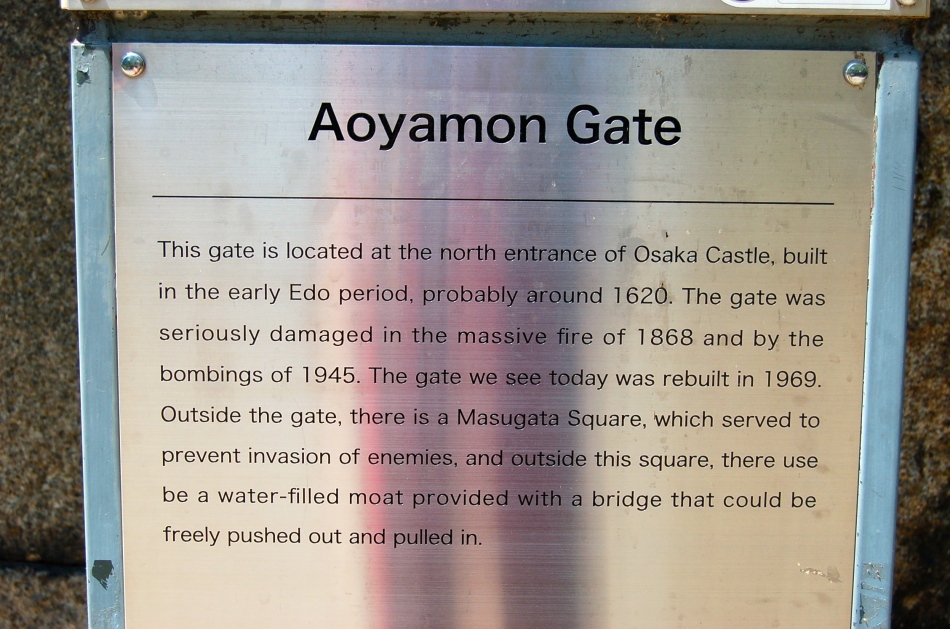 I the last photo, when I was taking photos of these information stands (in stainless steel) and looked quickly at my photo, I noticed dark lines in the middle and thought where did they come from? I really need to wear my reading glasses more…
I the last photo, when I was taking photos of these information stands (in stainless steel) and looked quickly at my photo, I noticed dark lines in the middle and thought where did they come from? I really need to wear my reading glasses more…
12 Chapter of Nagoya Tour: Chapter 9 – Course Featuring the Townscape of Arimatsu and the Battle of Okehazama
Welcome back everyone. We are now in Chapter 9 (getting there) and learning a lot more about the history of Nagoya and Japan as I go through these 12 Chapters each week. This week’s chapter features an important historical area of Nagoya. Arimatsu is a small town that has a well-preserved Edo Period buildings and houses as well as a park that was the site of the Battle of Okehazama – an important battle where Oda Nobunaga (a hero in these chapters) defeated Imagawa Yoshimoto (one of the villains in these chapters) and henceforth united Japan in the 16th century.
I didn’t realise the importance of this chapter in Japan’s history until I found the historical park and read the wall where the brief history of the battle was written. I hope you’re as excited as I was…Let’s go for a stroll.
1. Townscape of Arimatsu. Designated as townscape preservation district of Nagoya. Now, this is a townscape! Traditionally a lodging village along the Tokaido highway during the Edo period. From the Atimatsu station it is only a matter of stepping out and down to the street level. You then walk into ancient Edo period. The street around the station is lined with buildings and houses, very well-preserved, it made you feel you were in 17th and 19th century Japan.
2. Arimatsu Narumi Tie-Dyeing Museum. One of the traditional crafts of Japan, the Arimatsu Tie-Dyeing contributes for the majority of all tie-dyeing produced in Japan with over 100 dyeing techniques. All over the town of Arimatsu you will see items that have been tie-dyed and they are beautiful. The museum holds showing and lesson for the craft, unfortunately, it was in Japanese. The museum has a boutique on the first level where one can buy a variety of tie-dyed items.
3. Okehazama Historic Battlefield Park. In 1560 approximately 2000 soldiers led by Nobunaga defeated Yoshimoto and his forces of 25,000 took place here. It is believed that this park was where Yoshimoto took his last stand. After winning the battle Nobunaga initiated the reunification of Japan as one nation.
4. Chofuku-ji Temple. This temple retains a wooden statue of Yoshimoto and believed to have supplied sake and food to his forces during the battle of Okehazama. There isn’t much information about the shrine other than what was stated in the tour guide. The temple itself is small and very conservative.
5. Okehazama Shinmeisha Shrine. Known in the past as Okehazama village. Prior to the battle of Okehazama Yoshimoto’s retainer Sena Ujitoshi with around 200 warriors came to pray for victory, donating barrels of sake. These barrels are said to still remain within the shrine. It is believed that over 1000 defeated warriors fled here and lived a life of seclusion, who then established this shrine.
This course was quite easy to follow, even with the combination of train, walking and bus modes to get to each point of interest. The town itself was beautiful.
If you haven’t seen the previous chapters and would like to, here they are:
Chapter 1: Nagoya Castle Course
Chapter 2: Course covering region of the Owari Tokugawa family and the Cultural Path
Chapter 3: Oda Nobunaga “Owari’s Foolhardy Youth” Course
Chapter 4: Course Covering the Birthplace of Toyotomi Hideyoshi and Kato Kiyomasa
Chapter 5: Course for Experiencing Nagoya Manufacturing
Chapter 6: Nagoya Stroll Course
Chapter 7: Funtown Osu Course
Chapter 8: Atsuta History Course
Heres hoping everyone have a safe and fun week. See you next time.
A Word a Week Challenge – Face
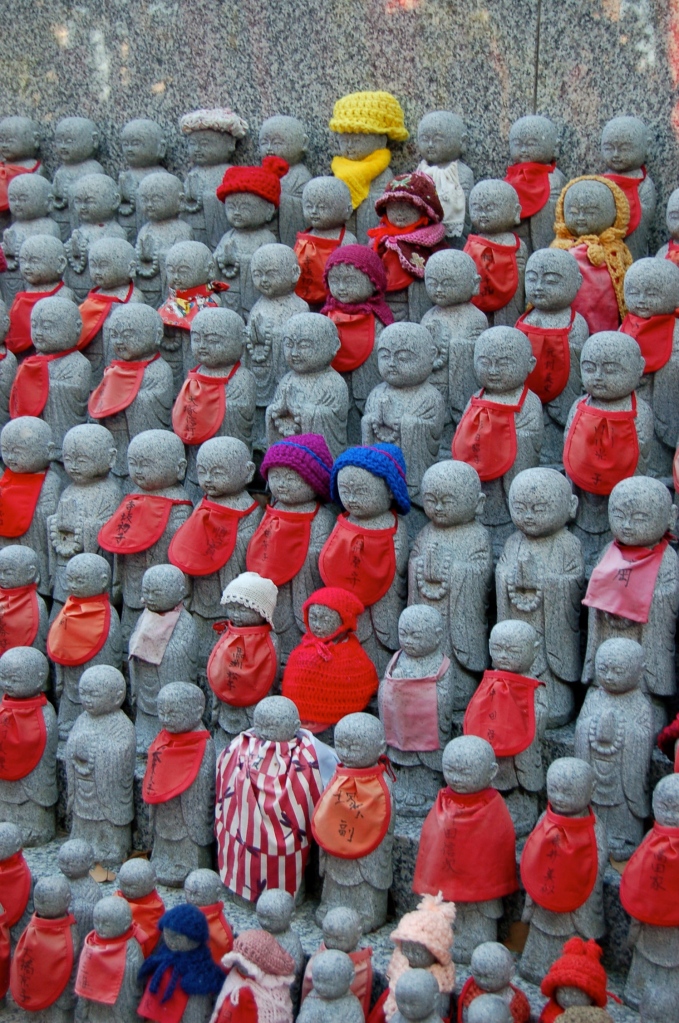 These are stone sculptures with images of babies commonly seen around buddhist temples. Jizō statues are popular in Japan as they believe that it can alleviate the suffering of both the living and those who have died. Jizō are also honoured by modern buddhist believers in Japan as the protector of the unborn, miscarried, still-born and aborted babies.
These are stone sculptures with images of babies commonly seen around buddhist temples. Jizō statues are popular in Japan as they believe that it can alleviate the suffering of both the living and those who have died. Jizō are also honoured by modern buddhist believers in Japan as the protector of the unborn, miscarried, still-born and aborted babies.
I have seen many of these statues but these photos were from a recent visit to a temple in Osaka. I liked these statues as the faces of the Jizō are more expressive and serene. And my favourite is the first photos where it showed both mother and baby, which I haven’t seen before.
Don’t forget to drop by A Word in Your Ear for more of this week’s A Word a Week Challenge.
“Nara is a Treasure House of Ancient History and Culture…”
This was a quote taken from Nara City’s sightseeing guide brochure. Nara City is a highly recommended site to visit – for the great buddha as well as the relaxed atmosphere of the city. And it did not fail. Not only was this city another former capital of Japan, this small city is packed with history, ancient architecture, world heritage listed buildings and lots of deers!
Once again, I started my day visiting the Nara City Tourist Info Centre next to the Jr Nara Station. The lady who welcomed me, as I walked into the office, with a beaming smile on her face! What a great start to my day! She gave me a walking map and told me that a special Japanese show was happening at a certain time. Lovely lady. I believe they are volunteer staff, so it meant more being cordially welcomed to their city. A short walk or bus ride from the Nara Station is the Nara park then all around and within the park is the Nara National Museum and other museums as well as numerous temples and shrines.
Still brooding from the missed major ‘to-see’ places in Kyoto, I aimed to go straight to the main place to see in Nara, so first up – Todaiji Temple. A world heritage site, Todaiji Temple is most famous for the world’s largest bronze buddha – Daibutsu-san, the great buddha. The original temple was established in the 8th century, burned down by fires during the war and rebuilt in 1709 to a scaled-down size of two-thirds of its original size.
I liked the architecture of this temple, although I worry about the preservation (or the lack of) effort on the Daibutsuden Hall, as it is all made of timber which is very much exposed to natural air. Although I am not an expert on maintenance of these structures I wonder how much longer they would stand time and aging.
Exiting from the side of Todai-ji Temple is a pathway to Tamukeyama Hachimangu Shrine. I do not know much about this shrine aside from the fact that it was originally built in the 8th century for the purpose of protecting Todai-ji Temple. The original building was burnt down in 1180 and rebuilt to the current building around 1250. Tamukeyama Hachimangu Shrine was separated from Todai-ji Temple around the Meiji Period (1868-1912) due separation of buddhism and shintoism. It’s a smaller shrine compared to Todai-ji Temple and had an interesting Ema wishing cards.
Walking further east on the Nara Park my next stop was the Kasuga Taisha Shrine, another world heritage site. This shrine is famous for over 2000 stone shrines as well as a thousand hanging bronze lanterns. Established in the 8th century and has been restored many times. The shrine is beautifully located within a lush forest, rich vermilion-coloured shrine with cypress-bark roof. I absolutely love the hanging lanterns! When I visited the Japanese wisteria was in season. This type of wisteria is special for its long bunches of flowers known to touch the ground. The wisteria in the shrine are believed to go way back since the 8th century.
The shrine spreads out a large area including prayer halls, treasure hall, a botanical garden, a traditional tea house and more.
By this time I was famished and searching for something to eat! I stopped by ‘Nanaijaya’ a traditional tea room along the walk from Kasuga Taisha for some tea and 0mochi. Then is was time to walk back down towards the Nara station for more interesting places to check nearby. The next temple on the map was the Kofukuji Temple, which I thought would be closed for renovations. Instead they just had some temporary office to accommodate worshipers to buy their wishing cards, sign personalised renovation tiles and other auxiliary roles. The world heritage buildings, including a five-story pagoda – a symbol of Nara, was still open for visitors.
This temple was established in the 7th century, burnt down five times! and reconstructed in 1426. The buildings are wooden and beautiful, albeit some scaffolding in certain areas with one of the main buildings fully covered. But I didn’t let that dampen my visit.
The Kofukuji Temple is right next to a shopping centre along the Sanjodori street. Crossing that main street I found myself in Naramachi. Naramachi is an old merchant’s district with old buildings still used as shops or houses. It’s very nice to walk along the narrow streets and every turn promises something old and new.
A few streets within the Naramachi area is another world heritage Gangoji Temple. Gangoji Temple was established in the 6th century as the first buddhist temple in Japan. This temple is proudly part of the Seven Great Temples of Nara. The official website for Gango-ji has extensive details about their philosophy and its institute for research of cultural property.
I liked this temple for its architecture and uncommon buildings in the property. The staff was very friendly and welcoming of tourists. I can understand that these are religious buildings and sometimes tourists, like myself, come poking in with our cameras may be disrespectful. It is a lot harder when the guidelines are written in Japanese, and the lack of understanding of the language, could be inconvenient when some places are restricted.
As any day trips go, a day is too short to fully experience the city. Nara is a beautiful city with is well-preserved world heritage sites mingling alongside some attempt to modernise. It was small enough to walk around but not restricting for those who might have other touristy interests. I prefer the old buildings especially temples and I wouldn’t mind going for another visit to finish the western side of the city.
The Ancient Capital of Kyoto
Kyoto was the former capital of Japan for over 1000 years yet even until today it remains as the country’s cultural centre and very much loved by visitors both locally and from around the world. It truly is a magical place. Unfortunately for me, I only had a short day to visit, but definitely not the last one – I will be back for more.
Following the weekend at Tateyama Alpine Route, next on my agenda was the ancient capital of Kyoto! It is a super express ride from Nagoya and quite easy to get around. From the time I stepped out of the train, the atmosphere around the Kyoto Station was welcoming. With the Kyoto city tourism right within a few steps from the central exit I felt comfortable tackling the day tour already. The ladies at the counter were helpful, spoke very good english and knew what was going on as we spoke.
As it was the golden week many places were closed due to the many public holidays happening that week. So I thought I will start with some world heritage sites. First up was Sanjusangen-do Temple. This was second top on my list of places to see (first on the list was the Imperial Palace) for its collection of 1001 Sanju-Kannon statues of buddhist deity. What I failed to read even at the back of my entry ticket was there was a very strict rule on ‘no photos’ inside the hall. I was speechless! as this was the main reason I visited this place! But, I moved on and enjoyed the Kannons and planted them in my memory. There are photos on-line and books about them as well. Nevertheless, outside the temple was as beautiful as the ancient Kannons.
The original temple was built around 1164 but lost in fire then reconstructed in 1266 and has remained unchanged for 700 years. It has since had four great renovations since. It is also known for its 120 metres long temple hall made in the Wayo or Japanese style architecture. The name Sanjusangen-do derived from its famous thirty-three spaces between the columns.
There are literally over a thousand temples and shrines in Kyoto. I managed to visit a couple smaller once within the vicinity of Sanjusangen-do temple before I made it to another UNESCO world cultural heritage listed building – Kiyomizu-dera. This temple was more tourist friendly which allowed photos, except from the private garden, where you can sit down and enjoy with only your memory.
Kiyomizu Temple is set atop a hill along the Otowa Mountain. Built in 778 which, unfortunately, was also burnt down by fires then rebuilt during the Edo Period between 1631-33. The temple is beautiful with the Kiyomizu stage built high on 12 metre pillars and boasts a great view of the city. The landscaped garden all around the temple is so pleasant to walk around (even when crowded) as there are splashes of colour everywhere.
From Kiyomizu temple the walk down beautiful Higashiyama District where you find souvenir shops, cafes, restaurants or just people watching is another experience.
There are many interesting sight to see on the eastern side of Kyoto also known as Higashiyama Dirstrict, but it is a vast area to cover. I missed out on Nijo Castle and the Kyoto Imperial Palace. Instead I chose to visit Rokuon-ji Temple more famously known as Kinkaku-ji (The Golden Pavilion.) The golden pavilion is a shariden, a buddhist hall containing relics of buddha. The garden and buildings are believed to represent the pure land of buddha in this world (albeit the crowd) and it was crowded. The design is quite tourist-efficient, though, as everyone can just walk through a path and see all the important features of the temple, without overcrowding in one area.
The garden around the pavilion is a National Special Historic Site and Special Place of Scenic Beauty where one should enjoy strolling around. For such a popular tourist attraction, this might be a bit challenging to accomplish, as it seemed always crowded.
The rain stopped and the clouds were clearing, but it was also getting late and museums and temples were closing. Instead of going to Gion District, which I really wanted not only to visit but experience, I chose to make a final dash over to Heian Jingu Shrine. Considered as the replica of the Kyoto Imperial Palace, Heian Jingu is an important cultural property of Japan. A young temple, compared to other temples in Kyoto, at only over a hundred years old – 1895, was burned down in 1976 and rebuilt using moneys collected from donations to what is now the current structure.
And that concluded my day in Kyoto, but only for now, I will definitely visit Kyoto again especially as I want to experience the culture in Gion District. I hope you enjoyed the photo tour with me. Up next is Nara also a former capital of Japan.
12 Chapters of Nagoya Tour: Chapter 8 – Atsuta History Course
Welcome back. We move on to Chapter 8: Atsuta History Course. Atsuta Shrine is considered one of the most venerable shrines in Japan second to Ise Grand Shrine or simply called ‘Jingu’ meaning The Shrine. This chapter’s course will introduce us not only to Atsuta Shrine and its treasures but some history around its property. So join me for a bit of a stroll around Atsuta.
1. Atsuta Jingu (Main Shrine). I have visited this shrine more than any other shrines in Nagoya. I am not a shinto believer but do not mind experiencing the many events celebrated in this beautiful temple. Previous visits included last Christmas day when they replaced the shimenawa and in Chapter 3 of the Nagoya Tour which I have written about. The other times I have visited were for other reasons but every time it seemed I discover something new about the shrine.
For this chapter I timed to visit Atsuta when they had a special dance festival on the first of May. The Bugaku Shinji is a ceremonial dance performed with ancient court music since the tenth century during the Heian era. Present day celebrations are just reminders of the bygone monarchy days of Nagoya.
2. Atsuta Jungu (Treasure Museum). Since 1966 the museum collection exceeds 6000 items, of which 95 precious items are designated as national treasures of Nagoya. The items were donated by people from the imperial families to general philanthropists, including a large number of swords.
3. Saidanbashi Bridge (Birthplace of Dodoitsu). This small bridge was a scene of a farewell between a mother and her son on his way to the battle of Odawara, led by Toyotomi Hideyoshi in 1590. The young man, unfortunately, died during his military service wherein the mother replaced it as a memorial for her lost son. The original ornamental cap on the post was engraved with a touching inscription of the mother’s love and is now kept in the Nagoya City museum. Dodoitsu, a Japanese poetry and a famous ballad played with a three-stringed Japanese instrument-shamisen apparently originated here. The area later on flourished as a literary centre.
4. Miya No Watashi Park. This park was the former site of a ferry crossing along the only sea route on the Tokaido Highway. Known as Shichiri no Watashi, a Japanese phrase which means crossing on seven ri, which translates to 27 kilometres in current measurement. The stone night light marked the departure and arrival of night ferries.
5. Shirotori Garden. This is a beautiful Japanese garden with a theme called ‘a watery story’ to represent the geographical features of the Chubu region. Established in 1991 and spreads through 3.7 hectares. I have visited this garden numerous times as well but never tire of its changing beauty. I have written about previous visits here and here. So for this post I would like to show the garden during different colours.
6. Hoji-ji Temple, Shiratori Tomb. The shrine was built as a small local shrine where Kobo Daishi worshiped Yamatotakeru-no-Mikoto and protects the treasure of Shiratori Tomb, believed to be the tomb of Yamatotakeru.
7. Danpusan Tomb. Danpusan means ‘to be without a husband’ as a reference to Mizuhime, wife of Prince Yamato Takeru, was known for not re-marrying after Takeru died. This is one of the legends behind this burial mound which has not been excavated. Known as the largest key-hole shaped mound, whoever was buried there must have been an important figure in history.
8. Seigan-ji Temple (Birthplace of Minamoto-no Yoritomo). The shrine contains a stone monument as a birthplace of Minamoto-no Yoritomo in 1147, the founder of the Kamakura Shogunate, a Japanese feudal military government. He was the third son of Minamoto-no Yoshitomo, the head of the Minamoto clan, a general during the Heian Period of the Japanese history.
This course was a rather interesting walking tour as it contained a number of historical facts that I would never have known just by visiting the shrine. I hope you enjoyed that as much as I have.
If you would like to trace previous chapters, here they are:
Chapter 1: Nagoya Castle Course
Chapter 2: Course covering region of the Owari Tokugawa family and the Cultural Path
Chapter 3: Oda Nobunaga “Owari’s Foolhardy Youth” Course
Chapter 4: Course Covering the Birthplace of Toyotomi Hideyoshi and Kato Kiyomasa
Chapter 5: Course for Experiencing Nagoya Manufacturing
Chapter 6: Nagoya Stroll Course
Chapter 7: Funtown Osu Course
Weekly Photo Challenge: Pattern
Patterns in any form are very interesting. Some tend to be quite pedantic in nature and others are purely aesthetic. Both are equally beautiful. This week’s Photo Challenge is Patterns.
For this challenge, I thought I would show you some photos I have of various Emas. Ema is a wooden plaque where Shinto worshipers write down their wish and hang at the temple for the spirits or gods of the temple to receive them. Here are some of them and hope you like it.
Spring? Is it?
It was the the start of the golden week here in Japan. Golden week is named so as there are numerous public holidays that fall within the same week and some workplaces, such as mine, take the whole week off. Unluckily for my hubby he had the usual work week. But that didn’t stop us from having fun on his consecutive days off (that I never get) and booked ourselves a (Japanese) tour to Tateyama Alpine Route where we could still enjoy a winter wonderland in the form of the Murodo Snow Wall.
I know some of you real adventurers out there might think, “umm, tour group? maybe not.” But we had no clue how to get there and the trip sounded easy with english guide provided. This part was a bit hilarious, the tour guide sounded like she was on a bilingual tv channel. She spoke Japanese on PA, then gestured for our instructions to follow. The trip started early in the morning and involved a lot of waiting and queuing.
From the Nagoya station where the tour kicked off we drove for a couple hours to our first toilet stop, and this was one thing I loved about the tour – generous toilet stops along the way! (It must have been put up by a lady tour planner) The first town was Unazuki where we hopped on an old style Kurobe Gorge train.
The train was an open type train and the view from the turn-around ride gave us an outlook of what the rest of the trip was about. Then we went off to Hakuba Onsen Village where we stayed for the night. Based on the tourism website the village came to life since the 1998 Winter Olympics in Nagano. The village hosted many of the athletes as it offered a number of winter sports actions.
The next morning we started with a Japanese style big breakfast and off to more bus and trolleybus rides to get to walk on the Kurobe Dam.
Next stop was a quick visit to Daikanbo Station via a ropeway ride up the mountain. This was our first touch of the winter wonderland of Tateyama.
Then onto our final trolley bus ride for the Murodo Snow Wall. I must say, after all the rides and waiting to get here…it was worth it all!
I couldn’t help myself touching the wall, it was such a amazing experience for me! Growing up in a tropical country where the weather was either sunny or rainy then seeing a snow wall like this was beyond words. The rest of the trip was just a blur compared to the experience of walking through this wall!
I highly recommend a trip to the Tateyama Alpine Route.
Weekly Photo Challenge: Culture
This contribution is a bit late for last week’s Photo Challenge. But, nevertheless, I would like to share this bit of cultural experience I had last week from Toyokawa, Japan.
These worshipers, mostly men, and a lady which can be seen here in peach dress, help lift this shrine placed on a deck of (heavy-looking) timber from the main shrine and around the temple grounds. Stopping is main halls and lifting it at least three times. The great spring festival is for harvest prayer. Around Japan many spring festivals are celebrated for fertility and harvest. Last year I also witnessed another Matsuri for fertility during spring time.
12 Chapters of Nagoya Tour: Chapter 7 – Funtown Osu Course
Osu Shopping District is one of the oldest and most popular shopping districts in Nagoya. Welcome to Chapter 7 of the 12 Chapters of Nagoya Tour. This course takes us through both history and shopping experiences. This is in my immediate neighbourhood and a nice place to walk around. So let’s go for a walk.
1. Fureai Park. Central to this park is the huge Maneki-neko, known in Japan as a welcoming cat, good luck or money cat and happy cat. This small Fureai Park is a famous relaxing area, meeting area or entertainment area. During weekends and special festival days this little park would be packed with audience enjoying a variety of entertainment. On quieter days people like to meet up here, have a snack and relax.
2. Nanatsudera Temple. In the olden Edo period days this temple was bustling with festivals and many events. Built in 735 and moved here from Kiyosu and became a place of worship for the Owari Tokugawa family. Today, the temple is quiet but still popular amongst local residents during market days and Osu festivals.
3. Osu Kannon Temple. Built in 1324 at Nagaoka Village and moved to its present location by Tokugawa Ieyasu in 1612 in conjunction with the construction of Nagoya Castle. Osu is popular amongst local residents and tourists for a traditional Japanese shopping experience, during many festivals and bimonthly flea markets. The temple is central to these experiences.
4. Osu Entertainment Hall. Opened in the 1960’s as one of the “Osu 20 Theatres”, but only the Osu Entertainment Hall remains. Famous for a variety of entertainment including comedic story telling, stand-up comedy and magic.
5. Akamon Myooden. A small and quiet temple tucked within one end of the Akamon-dori on the Akamon Myouo-dori. Akamon means red gate and affectionately nicknamed Temple Myoosan amongst locals. This small street comes to life on the 28th of each month with stalls during its monthly street fair.
6. Nagonoyama Park. The park was Nagoya’s first park way back in 1879 until Tsurumai Park opened in 1909. What remains of the park is a gentle hill, which is an authentic burial mound, a remnant from a group of burial mounds in Osu.
7. Bansho-ji Temple. A former place of worship for the Oda family. The site had a “famous” event wherein the young Nobunaga threw incense powder during the funeral of his father Nobuhide. Formerly located near the Nagoya Castle then moved to the current site which occupies the whole of east Osu in the past.
8. Shintenchi-dori Akamon-dori (Electronics Marketplace.) Known as one of Japan’s three largest electronic shopping areas. There is a large concentration of electronics stores along these streets which is frequented by electronics lovers.
If you have missed the previous chapters, here they are again:
Chapter 1: Nagoya Castle Course
Chapter 2: Course covering region of the Owari Tokugawa family and the Cultural Path
Chapter 3: Oda Nobunaga “Owari’s Foolhardy Youth” Course
Chapter 4: Course Covering the Birthplace of Toyotomi Hideyoshi and Kato Kiyomasa
Chapter 5: Course for Experiencing Nagoya Manufacturing
Chapter 6: Nagoya Stroll Course
The Historical Town of Takayama
We had the chance to visit another part of the what is known in Japan as the Central Honshu. Described by tour books as the region that shows the contrasts of present Japan – with its densely populated coastal cities whilst in the middle the highest and wildest mountains can be found. Whilst the region is very accessible to travel it has kept its traditional rural lifestyles, architecture and festivals.
Last Sunday, the 14th of April was the first day of Takayama’s world renown Spring Festival – Sanno Matsuri. The festival is a celebration of the guardian deity of the southern half of the ‘old town’ Takayama to welcome spring as well as pray for good harvest and peace for the year. The main event of the festival is the parade of 12 yatais (festival floats.) Later in the year after the hot days of summer Takayama then celebrates the Autumn Festival where there are 11 of these yatais on show. They are believed to date back as far as the 17th century. The current Takayama spring festival in the Ishikawa Prefecture have been celebrated for the past 40 years.
Every float has its own unique design with very intricate details. They were very beautiful! Here are photos of the floats but I haven’t named them individually as I do not wish to misquote their names.
Walking through the old town we experienced the beautifully preserved Edo period merchant’s businesses and private homes. Takayama is not only known for these festivals. The city is also well-known for the numerous sake breweries and gourmet restaurants. The old town was awarded the highest 3-star Michelin travel award as a destination worth travelling.
Aside from the beautiful festival and old preserved streets, it was the spirit of the locals that I loved the most. These festival participants were very proud of their heritage. The police and volunteers were very helpful, considering there were many lost (tourists) souls with their guide books and cameras. Here is my tribute to the lovely people of Hida Takayama.
We truly enjoyed our brief day in Takayama. Our only wish was if we could have stayed to watch the night festival when the floats were lit and went around the city streets once more. But…there’s always next time. I look forward to visiting the city again to explore the many temples and I can’t wait!
When you do get the chance to visit, It is really worth it! And stay the night if you can.
Hida Takayama’s detailed website is here.
12 Chapters of Nagoya Tour: Chapter 6 – Nagoya Stroll Course
6 down and 6 more to go! I reckon I’m going to finish this course, which is a bit of a challenge for me, starting something and going for it every week. I hope you are still enjoying following these courses as some of them are a bit boring, but I’m counting on the bigger picture to knowing the city I am in at the moment to be more than just what it seems in touristy brochures.
This course takes us to the modern side of Nagoya – “that continues to modernise; a profound city that combines modernity with human warmth.” That’s the intro quote from this week’s Chapter 6 of the 12 Chapters of Nagoya Tour. When I read through this week’s course I thought – easy! it’s my immediate neighbourhood! So I took advantage of the power of editing and took this course leisurely. So, here we go for this week’s stroll. Enjoy!
1. Nagoya Station Mae. The station Mae is famous for the number of skyscrapers in a small area around the Nagoya Station. Originally opened in 1886, surrounded by marsh, in what was then considered an outlying area of the city. Formerly a wooden station building reformed in 1937 to what is now a modern structure. After WWII the area became a commercial area with the city’s first underground commercial facility in 1937.
The station is complex and crowded. When walking around to find something I have lost my way here many times, but my trick was to keep walking around and it seems to just take you back around where you first started. Eventually, you will find what you were looking for in the first place. I have included Nana-chan in the photo gallery as she is considered one of the main meeting points when you get to Nagoya Station.
2. Yanagibashi Central Wholesale Market. Markets in this area started as a group of wholesalers in the late Meiji Period (1868-1912). This area is famous both with the local and international tourists. A short walk from the Nagoya Station in the city centre and a rarity in Japan.
When I arrived at the market street around midday the whole area was clean, quiet and closed. Only when I listened to the podcast did I learn that this market was mostly opened during the morning. There were still some stalls closing up, but I did not miss taking photos of the life after the rush.
3. Nayabashi Bridge. Nayabashi Bridge spans the Horikawa River, which flows from the north to the south through the center of Nagoya, both believed to be built in 1610 in conjunction with the building of the Nagoya Castle. The current retro bridge was re-built in 1981. Recently, restaurants and cafes are popular around the bridge and along the river.
4. Nagoya City Science Museum. Opened in 2011 the dome belongs to the Brother Earth Planetarium of the Nagoya City Science Museum, one of Japan’s finest comprehensive museums and the world’s largest. Once inside one may experience standing in an artificial tornado as well as being in an aurora laboratory in -30 degrees celsius.
Unfortunately, I have not been inside this museum as all the tours and instructions are in Japanese. I just enjoy the changes it goes through the year.
5. Sunshine Sakae. The Sky Boat ferris wheel is the first sight that stands out of downtown Sakae area. The building is known for various entertainment venues, restaurants, pubs and cafes. Popular amongst the younger Japanese crowd as well as those who want to experience a little bit of Japanese pop culture.
6. Oasis 21. Another icon in downtown Sakae area is the Oasis 21. This facility consists of a park, bus terminal, connections to the subway, underground shopping and the Aichi Arts Centre. The Milky Way Plaza/Galaxy Platform on the basement level hosts many events throughout the year. Visitors can enjoy a grassy area to rest and enjoy a day in Nagoya on the Field of Green level and provides a quick access to the Aichi Arts Centre. One can enjoy walking along the periphery and enjoy the sights of the city of the Spaceship Aqua on the rooftop level where water flows along the glass surface of the roof.
7. Nagoya TV Tower. A symbol of downtown Nagoya since 1954 the Nagoya TV Tower stands 180 meters tall. One can enjoy relaxing in the cafe and beer garden on the ground level; banquets and parties on the upper level; and 360-degree view of the city at the top level. The tower was designated as a Lover’s Sanctuary in 2008.
This is an interesting tower at towards one end of the Hisaya-odori park. It holds open air markets, special event at the beer garden and popular for weddings. I will be back one night to take night photos of the city as this is highly recommended.
I enjoyed this course even though I have walked through these streets and sights many times. I hope you have as well. Here are links to the previous chapters if you are interested. Have a great week everyone.
Chapter 1: Nagoya Castle Course
Chapter 2: Course covering region of the Owari Tokugawa family and the Cultural Path
Chapter 3: Oda Nobunaga “Owari’s Foolhardy Youth” Course
Chapter 4: Course Covering the Birthplace of Toyotomi Hideyoshi and Kato Kiyomasa
Chapter 5: Course for Experiencing Nagoya Manufacturing
12 Chapters of Nagoya Tour: Chapter 5 – Course for Experiencing Nagoya Manufacturing
This chapter’s course takes us through the origin of the ‘Manufacturing Kingdom Nagoya.’ Nagoya’s manufacturing industry contributes to the core industries that help build the modern Japan. So let’s go for a bit of walk around the manufacturing side of Nagoya.
1. Toyota Commemorative Museum of Industry and Technology. Established in 1994 by the Toyota group utilising the red brick factory building built in 1911 and preserved as an important industrial asset. The importance of manufacturing is shown here as the birthplace of Toyota group.
The museum is quite detailed with both textile machinery and automotive pavilions. These machineries are manned with live demonstrations. Unless you are an automotive buff or have a passion for machineries, this museum was rather too technical for my taste.
2. Noritake Garden. Since 1904 Noritake started as a manufacturer of porcelain tableware for exporting. The garden was established to commemorate Noritake’s 100th anniversary. The garden has various facilities including a museum of porcelain production history, a craft centre, showrooms and lifestyle shops and cafe. The garden itself showcases many historical features such as The Six Chimneys which shows the remains of old chimneys as a testament to Noritake as one of the world’s leading tableware manufacturers. Along the garden walls a retaining wall was made using old bricks from the foundation of the original factory building. Attached to the wall, known as the “Kiln Wall” are plates inscribed with donors to the Noritake Garden Foundation. Around the garden an old single kiln can be seen, an old factory gate, and a relaxing fountain plaza lined with trees and flowers.
This is a beautiful garden covered with seasonal trees – which can be enjoyed at different times of the year. You do not need to be a big fan of fine porcelain tableware to admire the beauty of this museum and garden. Unfortunately, cameras were not allowed within the museum areas. I spent more time just sitting outside admiring the flower beds and trees.
3. Bean’s Confectionary/Mamefuku Main Store. Famous for manufacturing confectionary in Nagoya since 1939. Their main products are traditional soy bean snacks made from large soybeans harvested in Hokkaido. These types of snacks are popular in Japan for their rich nutritional values. The store runs classes as well as tours.
4. Candy and Toy Wholesale Stores Street. The street is lined with wholesalers displaying boxes of traditional sweets since 1923 whilst the Nagoya Castle was being built. The construction people would visit the street to purchase their supply of confection. After WWII air raids the area recovered quickly and became known to supply confection and toys.
This was a nice street to walk through as the colourful display of confection and the collection from simple to the weird-looking toys on sale here are quite enticing.
5. Nagoya Japanese Fan (Suehirodou). Alongside Kyoto, Nagoya is known for producing traditional folding fans. Kyoto’s folding fans are more luxurious used by ladies in their traditional Japanese dance. Nagoya’s folding fans are used more for ceremonial events such as weddings and fans designed for men.
6. Japanese Kite (Takomo Original Store). Nagoya is famous for producing traditional Japanese kites. The original Takomo building and precious materials were burned down during WWII air raids. However, traditional techniques are still used to make these kites until today. Their designs are popular as interior decorations for many homes. The store offers tours and workshops such as taking your own photo or design and making an original kite.
7. Nagoya Black Kimonos with Crests (Yamekatsu Senko). The traditional black kimono with crest are unique to Nagoya. These black-dyed kimonos are worn during formal occasions and for mourning are dyed with family crests using traditional time-consuming process. Since the Edo period in the 17th century the Owari clan designated a dying expert to design flags and banners that later on extended to the dyeing of formal kimonos. The present Yamekatsu Senko offers tours and workshops to experience the black dyeing process.
There was a part (Shoes Design and Craft School) that I skipped and decided to miss out during this walking tour. My overall experience during this chapter’s tour was that it was quite technical, except for Noritake Garden which I thoroughly enjoyed and will visit again. The course distance was quite long but it was interesting to walk through the small streets and discover another side to Nagoya than the ones I am familiar with.
I hope you continue to enjoy exploring the 12 Chapters of Nagoya Tour with me. If you would like to have a peek at the previous chapters they are here:
Chapter 1: Nagoya Castle Course
Chapter 2: Course covering region of the Owari Tokugawa family and the Cultural Path
Chapter 3: Oda Nobunaga “Owari’s Foolhardy Youth” Course
Chapter 4: Course Covering the Birthplace of Toyotomi Hideyoshi and Kato Kiyomasa
Enjoy your spring time wherever you are in the world. Until next time.















































